Višnjik Sports Center in Zadar Becomes New Training Ground for Ukrainian Divers
March 22, 2022 - The Višnjik Sports Center in Zadar is the new training ground for Ukrainian divers, who will also be allowed to compete at all Croatian national championships.
The National Sports Federations of the Croatian Olympic Committee (COC) continue to accept athletes who have fled war-torn Ukraine. Thus, Ukrainian divers arrived in Zadar, who will train at the pool in the Višnjik Sports Center, hosted by the Zadar Diving Club and the Croatian Diving Association, reports HRT.
"After the letter from the Ukrainian federation to admit their athletes, we immediately started with the organization. Zadar was the first option given the best training conditions in Croatia; 43 Ukrainians are now there, athletes, coaches, and support staff. All are housed in private accommodation. We will also allow them to compete at all of our national championships, which is the least we can do for them," said the secretary of the HSSV, Marina Novosel.
One of the strongest globally, the Ukrainian national team is led by the legendary Illya Kvasa, the 2008 bronze medalist in Beijing, and a five-time European and two-time world champion.
"We are happy because we came to a safe place. We have not trained for a month because of the overall situation in Ukraine and the ongoing war. The most important thing is that we are safe now and manage to dedicate ourselves to training again. I hope that the war will end soon and that we will return to our homes as soon as possible. I thank our hosts who have received us very well, are very kind, and are always there for everything we need," said Kvasa.
"We are glad that we managed to organize and accommodate our sports friends who have taken refuge here from the war in their country in a short time. We are here for everything they need," added the president of the Zadar Diving Club, Marko Nevešćanin.
To read more about sports in Croatia, follow TCN’s dedicated page.
Ryanair Zadar Summer Flight Schedule Delayed, Changes from Zagreb Base
March 21, 2022 - The latest flight news to Croatia as the Ryanair Zadar summer flight schedule is delayed, and several changes have been announced from Zagreb.
Ryanair has changed the summer flight schedule for its two bases in Croatia, reports Croatian Aviation.
The start of traffic on several lines from Zadar has been postponed to June. As for Zagreb's Ryanair base, several routes have received an additional weekly flight, and several lines will operate with a reduced number of flights.
Namely, lines from Zagreb to Brussels Charleroi, Milan Bergamo, Malta, Memmingen, Malmö, Paphos, Rome Fiumicino, and Düsseldorf Weeze have been strengthened with an additional weekly rotation. Also, the number of flights on the new route to Bratislava has been increased from the original two to three flights a week.
On the other hand, Ryanair will reduce the frequency of flights to Dublin to three-weekly flights, and from the planned initially two-weekly flights to one weekly flight to Corfu.
The summer flight schedule was also revised from the Zadar base. Namely, the starting date for several flights has been postponed.
Below is an overview of all Ryanair flight schedules from Zadar and their start dates.
Lines starting in March:
Zadar - Berlin Brandenburg - Zadar, from March 28, 2022, twice a week (Mondays and Fridays), until the end of October
Zadar - Bremen - Zadar, from March 30, 2022, twice a week (Wednesdays and Saturdays) until the end of October
Zadar - Brussels Charleroi - Zadar, from March 28, 2022, three times a week (Mondays, Tuesdays, and Saturdays) until the end of October
Zadar - Budapest - Zadar, from March 27, 2022, twice a week (Thursdays and Sundays), until the end of October
Zadar - Cologne - Zadar, from March 28, 2022, twice a week (Mondays and Fridays), until the end of October
Zadar - Dublin - Zadar, from March 27, 2022, twice a week (Wednesdays and Sundays), until the end of October
Zadar - Düsseldorf Weeze - Zadar, from March 27, 2022, four times a week (Tuesdays, Thursdays, Saturdays, and Sundays) until the end of October
Zadar - Frankfurt Hahn - Zadar, from March 28, 2022, twice a week (Mondays and Fridays), until the end of October
Zadar - Karlsruhe / Baden-Baden - Zadar, from March 28, 2022, three times a week (Mondays, Tuesdays, and Saturdays) until the end of October
Zadar - London Stansted - Zadar, from March 29, 2022, twice a week through April (Tuesdays and Fridays) and May (Tuesdays and Saturdays), five times a week through June, July, August, and September (Tuesdays, Thursdays, Fridays, Saturdays, and Sundays), and again twice a week until the end of October (Tuesdays and Saturdays)
Zadar - Marseille - Zadar, from March 27, 2022, twice a week (Thursdays and Sundays), three times a week through May, June, July, August, September, and October (Tuesdays, Thursdays, and Sundays)
Zadar - Memmingen - Zadar, from March 29, 2022, twice a week through April and May (Tuesdays and Saturdays), three times a week through June, July, August, September (Tuesdays, Thursdays, and Saturdays), and again twice a week until the end of October (Tuesdays and Saturdays)
Zadar - Newcastle - Zadar, from March 30, 2022, twice a week (Wednesdays and Sundays), until the end of October
Zadar - Paris Beauvais - Zadar, from March 30, 2022, twice a week (Wednesdays and Saturdays), until the end of October
Zadar - Poznan - Zadar, from March 29, 2022, twice a week through April (Tuesdays and Saturdays), four times a week from May to the end of October (Tuesdays, Thursdays, Saturdays, and Sundays)
Zadar - Rome Fiumicino - Zadar, from March 28, 2022, three times a week through April (Mondays, Tuesdays, and Thursdays), four times a week from May to the end of October (Mondays, Tuesdays, Thursdays, and Sundays)
Zadar - Stockholm Arlanda - Zadar, from March 27, 2022, twice a week (Wednesdays and Sundays), until the end of October
Zadar - Vienna - Zadar, from March 27, 2022, three times a week in April and May (Mondays, Fridays, and Sundays), four times a week in June, July, August, and September (Mondays, Wednesdays, Fridays, and Sundays), and again three times a week until the end of October (Mondays, Fridays, and Sundays)
Lines starting in April:
Zadar - Krakow - Zadar, from April 2, 2022, once a week through April (Saturday), three times a week through May (Monday, Friday, and Saturday), four times a week through June, July, August, and September (Monday, Wednesday, Fridays and Saturdays), and again three times a week until the end of October (Mondays, Fridays, and Saturdays)
Lines starting in May:
Zadar - Birmingham - Zadar, from May 4, 2022, twice a week (Wednesdays and Saturdays), until the end of October
Zadar - Bordeaux - Zadar, from May 2, 2022, twice a week (Mondays and Fridays), until the end of October
Zadar - Bucharest - Zadar, from May 4, 2022, twice a week (Wednesdays and Saturdays) until the end of October
Zadar - Gothenburg Landvetter - Zadar, from 3 May 2022, twice a week (Tuesdays and Saturdays), until the end of October
Zadar - Hamburg - Zadar, from May 2, 2022, twice a week (Mondays and Fridays), until the end of October
Zadar - Leeds Bradford - Zadar, from 3 May 2022, twice a week (Tuesdays and Saturdays), until the end of October
Zadar - Pisa - Zadar, from May 4, 2022, twice a week (Wednesdays and Saturdays) until the end of August
Zadar - Prague - Zadar, from May 3, 2022, three times a week (Tuesdays, Thursdays, and Saturdays) until the end of October
Zadar - Sofia - Zadar, from May 1, 2022, twice a week (Wednesdays and Sundays) until the end of October
Zadar - Warsaw Modlin - Zadar, from May 1, 2022, twice a week (Thursdays and Sundays), until the end of October
Zadar - Wroclaw - Zadar, from May 2, 2022, three times a week (Mondays, Wednesdays, and Fridays) until the end of October
Lines starting in June:
Zadar - Aarhus - Zadar, from June 3, 2022, twice a week (Mondays and Fridays), until the end of September
Zadar - Bari - Zadar, from June 2, 2022, twice a week (Thursdays and Sundays), until the end of September
Zadar - Bologna - Zadar, from June 2, 2022, twice a week (Thursdays and Sundays), until the end of September
Zadar - Bournemouth - Zadar, from June 4, 2022, twice a week (Tuesdays and Saturdays), until the end of September
Zadar - Gdansk - Zadar, from June 4, 2022, twice a week (Tuesdays and Saturdays), until the end of September
Zadar - Helsinki - Zadar, from June 3, 2022, twice a week (Mondays and Fridays), until the end of September
Zadar - Liverpool - Zadar, from June 2, 2022, twice a week (Thursdays and Sundays), until the end of September
Zadar - Maastricht - Zadar, from June 3, 2022, twice a week (Mondays and Fridays), until the end of September
Zadar - Manchester - Zadar, from June 4, 2022, twice a week (Tuesdays and Saturdays), until the end of September
Zadar - Milan Bergamo - Zadar, from June 2, 2022, three times a week (Tuesdays, Thursdays, and Sundays) until the end of August
Zadar - Naples - Zadar, from June 3, 2022, twice a week (Mondays and Fridays), until the end of September
Zadar - Nuremberg - Zadar, from June 2, 2022, four times a week (Tuesdays, Thursdays, Saturdays, and Sundays) until the end of October
Zadar - Turin - Zadar, from June 3, 2022, twice a week (Mondays and Fridays), until the end of September
Zadar - Växjö Småland - Zadar, from June 1, 2022, twice a week (Wednesdays and Sundays), until the end of September
The flight schedule is always subject to change.
For more on flights to Croatia and other travel announcements, check out our dedicated travel section.
4 Ryanair Pula Summer Flights Announced, Brussels Airlines Returns to Zadar
March 10, 2022 - The latest flight news to Croatia as four Ryanair Pula summer flights have been announced, and Brussels Airlines returns to Zadar Airport.
Irish low-cost airline Ryanair will operate on four international routes from Pula Airport this summer. Namely, these are direct flights to destinations in Austria, Belgium, Poland, and the United Kingdom, reports Croatian Aviation.
The first line to London (Stansted Airport) will run from March 27, twice a week, on Thursdays and Sundays. From June 2, the third weekly flight is added, on Tuesdays, with this flight schedule remaining in force until the end of September. Two-weekly flights have been re-announced for October, with the last Ryanair flight to London on October 27.
B937-800 aircraft with a capacity of 189 seats have been announced to London. A total of 29,862 seats are available between London and Pula on this Ryanair line.
The very next day, March 28, the line for Brussels Charleroi will start operating, with Ryanair announcing three weekly flights, on Mondays, Wednesdays, and Fridays, until October 28. B737-800 aircraft have also been announced on this route, with a total of 35,154 seats between Charleroi and Pula.
From June 1, the new Ryanair line between Pula and Vienna will start operating twice a week, on Wednesdays and Sundays, until September 28. A320 aircraft have been announced on this route.
On June 3, the last, fourth line to Pula, from Poznan, Poland, will start operating. Flights have also been announced twice a week, on Mondays and Fridays, until September 30. Between Pula, Poznan, and Vienna, the Irish airline is offering a total of 25,200 seats this summer.
On the four announced routes to Pula Airport, Ryanair offers a total of more than 90,000 seats (90,216), and with an average passenger cabin occupancy of 86% (data for February 2022), this airline could bring over 80,000 passengers to Pula this summer.
Belgian airline Brussels Airlines is introducing a scheduled flight between Brussels and Zadar in the upcoming summer flight schedule, reports Croatian Aviation.
The seasonal route between Zadar and Brussels was introduced by the Belgian national airline in the 2018 summer flight schedule, but the line was not in operation during the last two seasons due to the pandemic.
Although it did not announce the line in its initial summer announcement, Brussels Airlines subsequently released tickets for this line, which will start operating on May 7.
The flights will run once a week, every Saturday, and are currently scheduled until the end of the summer flight schedule (October 29). The A319 aircraft with a capacity of 141 seats will operate on the route.
With the return of Brussels Airlines to Zadar Airport, Zagreb Airport remains the only destination in the country to which this airline has not returned after the lockdown in Europe. Zadar Airport, in addition to the Brussels Airlines line, also has a flight to Charleroi in the summer schedule, operated by Ryanair.
For more on flights to Croatia and other travel announcements, make sure to check out our dedicated travel section.
Public Humiliation, the Old-Fashioned Way: Pillars of Shame in Croatia
February 27th, 2022 - Public shaming nowadays mostly takes place on social media, so we tend to forget that it once used to have a much more tangible form. Have you ever seen a pillar of shame in Croatia?
In a village called Salež, not far from Buzet town in Istria, stands a solemn monolith. A human figure carved in stone, weathered and overgrown with moss.
It’s not an old deity you’re looking at, but a pillar of shame, a once popular tool for punishment by public humiliation.
Transgressors of all kinds were tied or chained to stone pillars, typically set up on town squares or other public places of gathering, and left to the mercy of the mob. The more severe the offence, the longer the convicts had to endure the misery, with more serious crimes often warranting corporal punishment on top of the humiliating public exposure.
 Pillar of shame in Salež, Istria / Buzet Tourist Board Facebook
Pillar of shame in Salež, Istria / Buzet Tourist Board Facebook
Pillars of shame existed all over Europe, Croatia being no exception. Public shaming was judicially sanctioned until emperor Joseph II banned it as a method of criminal punishment in the 18th century.
The practice lived on in other ways; most recently, it moved to the virtual space where it assumed a more insidious form. Social media only seems to instigate the mob mentality, and gone are the days of public punishment lasting an hour or two - your past transgressions are forever saved for anyone to find. The internet never forgets, and the old stone pillars and chains almost seem benign in comparison.
In Croatia, several pillars of shame survive to this day. The anonymous figure in Salež is arguably the most unique of the lot - and the most unsettling - as it’s the only one that has a human form.
Among the locals, the pillar is known as Berlin, getting its name after berlina, a type of four-seat carriage that once operated on the route Berlin - Paris and was used for transportation and public shaming of convicts. Berlin the pillar is made of white stone that isn’t naturally found in the area. The figure wears a cap, and is resting its left hand on his chest, on a spot once used to clip the chains with which the convicts were tied.
There’s an inscription in Latin on the front of the figure, barely visible, translating to justice to this poor province.
A local named Mate Grižančić recalls that the village elders used to speak of the pillar being brought to Salež on a carriage adorned in flowers, pulled by six of their strongest oxen. A parade of eighteen girls dressed in white followed the carriage as it rolled into town.
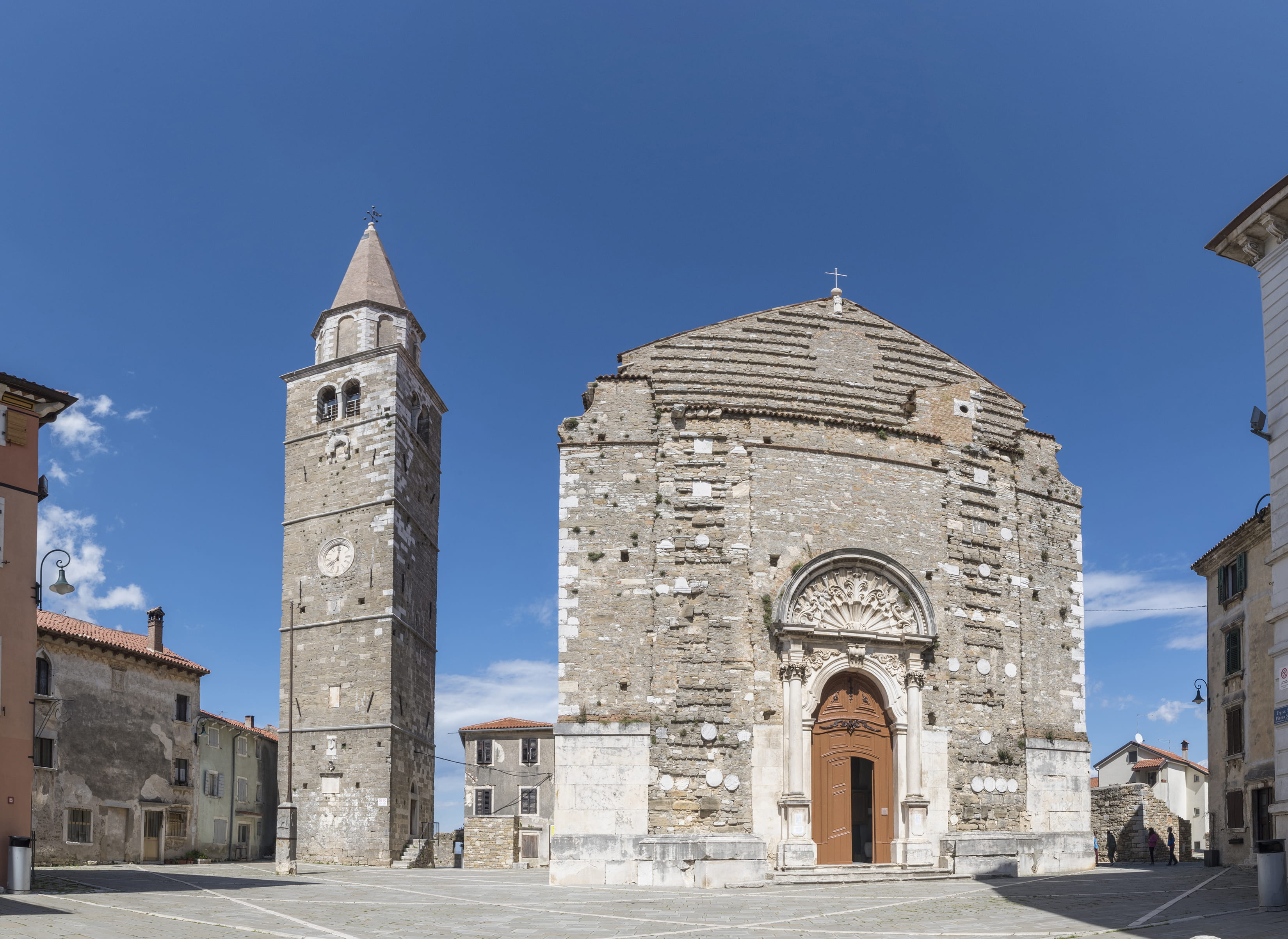 Church of St. Servulus in Buje / istra.hr
Church of St. Servulus in Buje / istra.hr
Another pillar of shame in Istria is found in Buje. The town is truly the best of both worlds where Istria is considered: it spans over two inland hills, giving off the classic Istrian-hilltop-town vibes, with the sea glimmering on the horizon as the coast is only 10 kilometres away.
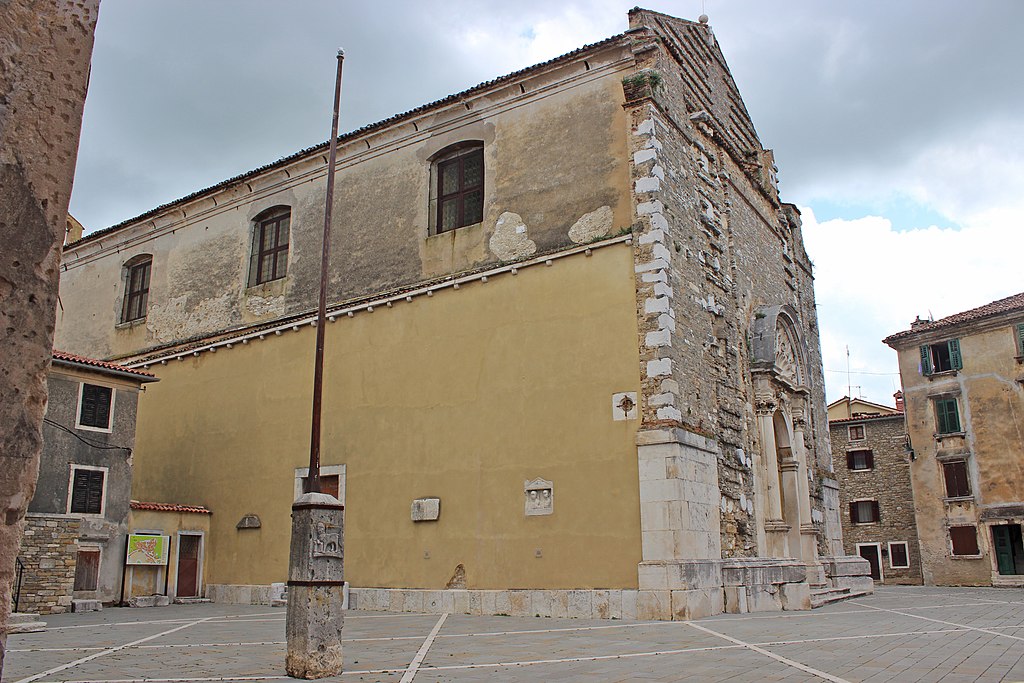 Pillar of shame, church of St. Servulus in Buje / Creative Commons
Pillar of shame, church of St. Servulus in Buje / Creative Commons
At the highest point in town, in front of the imposing Baroque church of St. Servulus, you’ll find a pillar that was reportedly used for public humiliation in the 17th century, and later as a flag pole. Spot the Venetian lion on the pillar and elsewhere in town, remnants of the long period of Venetian rule.
An honorary mention goes to Sveti Lovreč, one of the best preserved fortified medieval settlements in Istria which gets its name from the small church of St. Lawrence.
Perched in the centre of the main square is a pillar of shame that’s only partially preserved, standing on a pedestal.
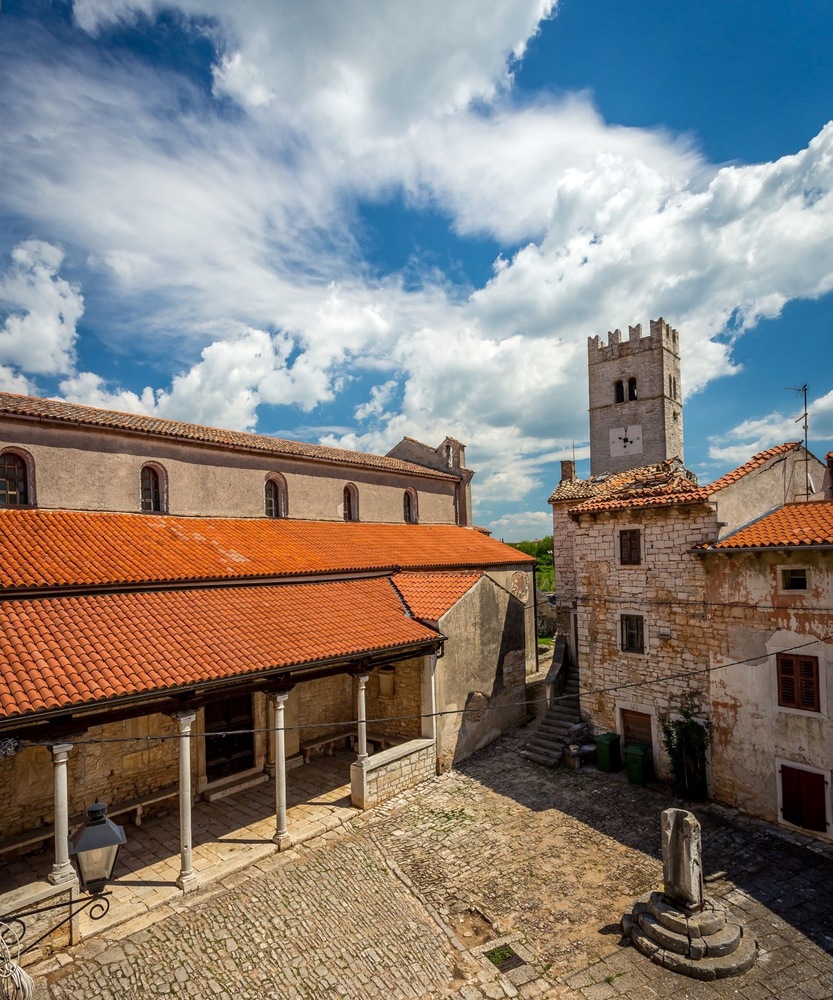 Sveti Lovreč, pillar of shame in the bottom right corner / Image by Central Istria Tourist Board
Sveti Lovreč, pillar of shame in the bottom right corner / Image by Central Istria Tourist Board
Public shaming sure seems to have been a popular method of punishment in Istria - what about the rest of Croatia?
Quite a unique landmark is found in Vinica near Varaždin. It’s locally known as pranger, named after the German term for a pillar of shame. Originally located at the Vinica fortress, the pranger was moved several times and is now installed at the Matija Gubec Square.
The three-sided pillar is slightly reminiscent of an obelisk; each side is crowned with a man’s head, carved in stone. The three faces all have different features, but share a chiselled moustache as a common trait.
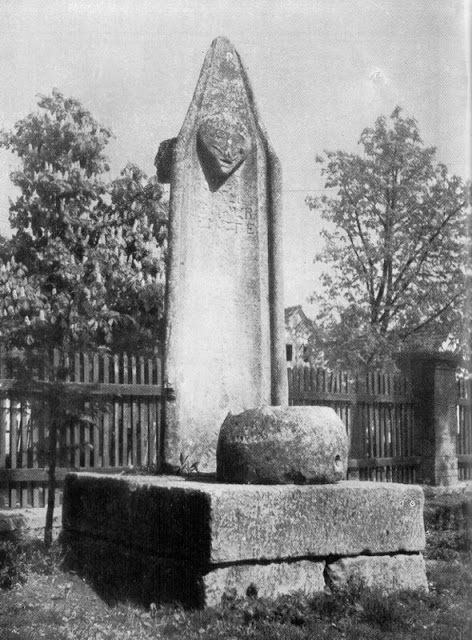 Pillar of shame in Vinica / Zagreb Nekada Facebook
Pillar of shame in Vinica / Zagreb Nekada Facebook
Next to the central figure, the year 1643 is engraved, followed by a Latin inscription:
IVSTAM MENSVR(AM) TENETE
Measure honestly, it warns. Together with the round stone vessel installed on the pedestal, the inscription points to the fact that the Vinica pillar doubled as a measuring tool. Grain and similar produce were measured with the help of stone pots since medieval times; the merchants who were caught trying to cheat their customers ended up tied to the pillar and were given a thorough thrashing - verbal or otherwise.
On the coast, a famous specimen of its kind is found in Zadar, standing at the northwest side of the Roman forum.
Given its former purpose, the slender column looks much more intimidating than its Istrian counterparts. Fourteen metres tall and ancient Roman in origin, the column was repurposed into a pillar of shame in the Middle Ages.
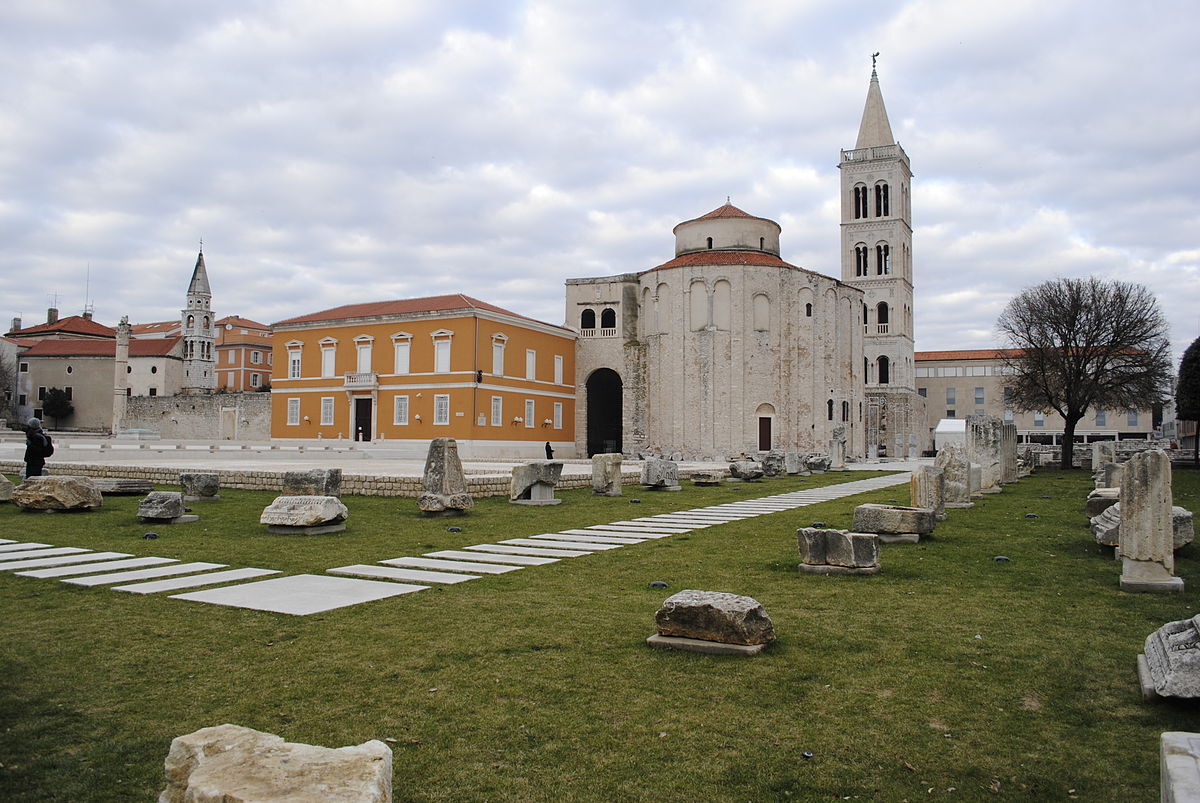 Roman forum in Zadar, pillar of shame on the left / Creative Commons
Roman forum in Zadar, pillar of shame on the left / Creative Commons
Nowadays one of the most popular spots in town, the location surely used to instil unease in the local population back in the day. Offenders of all kinds were chained to the pillar and left exposed in public for several hours on average.
Women who were caught emptying their night pots through the window or throwing any other kind of garbage into the street got an hour on the pillar. A sign was hung around their neck that read šporkulja - a title that doesn’t translate well, but indicates the woman was messy or dirty.
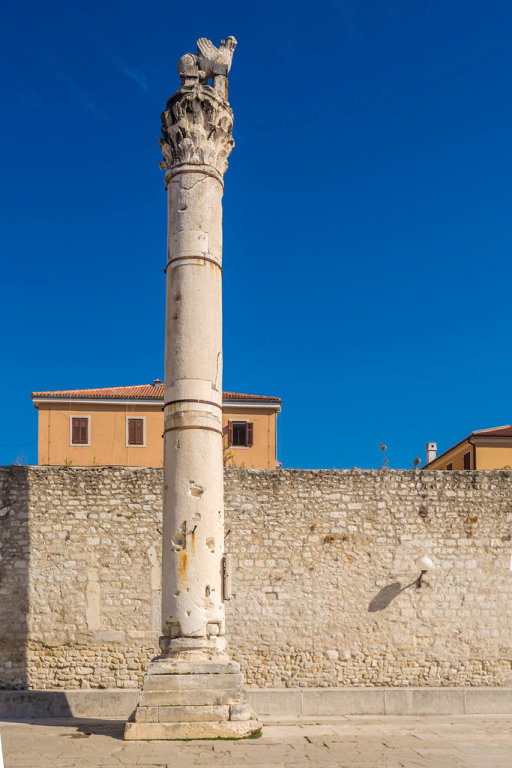 Pillar of shame in Zadar / Marco Verch, Creative Commons
Pillar of shame in Zadar / Marco Verch, Creative Commons
Other offenders were given a sign as well, listing all their transgressions; theft and solicitation were the most common offences. The gathered masses were happy to hurl insults at them, as well as a wide range of objects. If a person was accused of theft, they’d get a lashing on top of being harassed by the public.
Offenders were often forced to pay a fine for the privilege of pillar use after the entire ordeal - a whole new level of adding insult to injury.
Further south, in the town of Omiš famed for its pirates, a pillar of shame stands on a square near the river Cetina. The final item on our list, the elegant column bears the insignia of the Venetian general, and it’s believed it dates to the 17th century.
Medieval Music Closer than Ever Thanks to Ensemble Dialogos
February 24, 2022. This project of interpreting the sacred repertoires of Medieval music in Europe, whose artistic director is Katarina Livljanic, celebrates 25 years since its first performance in Paris on February 22, 1997. Introducing Ensemble Dialogos.
The Ensemble Dialogos was founded in 1997 and brings together singers and instrumentalists from different backgrounds and countries to revive the European musical traditions of the Medieval and Renaissance repertoire.
Katarina Livljanić has directed the vocal Ensemble Dialogos from the beginning. She is a singer and musicologist and is one of the most important international specialists in medieval chant performance. Born in Zadar, she decided to become a medieval music performer very early, training at the Zagreb Music Conservatory before moving to France to study voice and musicology. She is currently a professor at the Schola Cantorum in Basel and Maître de conferences in medieval music at the Sorbonne University in Paris, where she codirects a medieval music performance Master programme.
Her passion for this musical genre has turned her commitment into an authentic international success. For her work in this field, she was decorated for cultural achievement in 2002 by the president of Croatia and was awarded in 2016 the title Chevalier des Arts et des Lettres by the French government.
Through the research of Katarina Livljanić, Dialogos programs allow worldwide audiences to (re) discover unknown repertoires, with a particular interest in the South Slavic world. The past is brought to life through a musical language based on medieval sources, prayers, traditional melodies, and polyphonies. The Ensemble has performed in several European countries and in the most important early music festivals in Europe, the United States, Canada, North Africa, and Latin America. The Ensemble has also won several international awards thanks to their projects and performances, which combine new musicological explorations with innovative interpretations, a theatrical dimension, and expressive musicality.
Katarina Livljanić’s most recent solo project is a musical theatre production entitled Judith, based on the masterpiece by the 16th-century Croatian poet Marko Marulić and inspired by Gregorian and Glagolitic sources of Dalmatia, as well as the oral tradition.
Judith is a seventy minutes-long story told through music, in which Katarina Livljanić deserves equal respect and admiration both as an author and as a performer. At the centre of the stage is the narrator-singer, who, with clear diction, a wide range of vocal nuances, and pure intonation, shows exceptional acting skills.
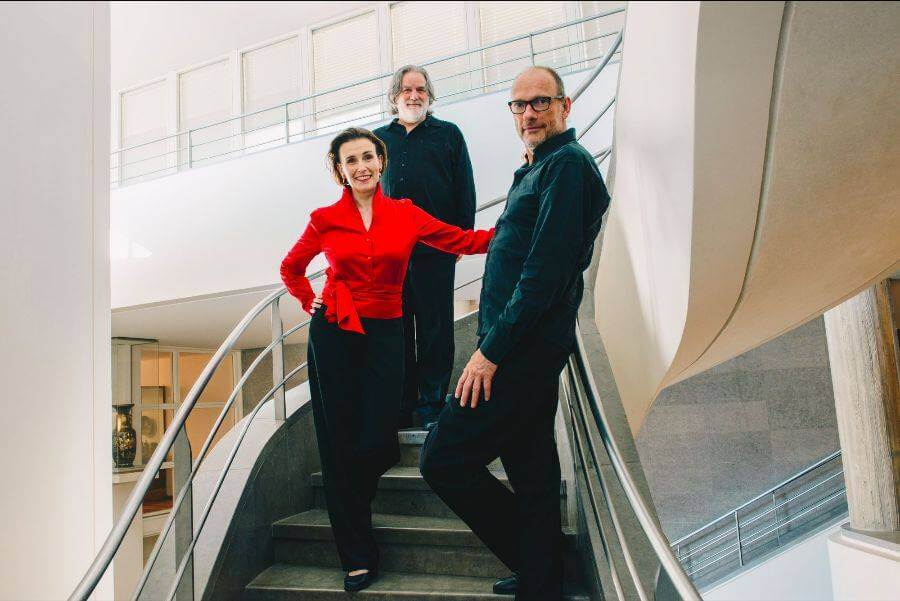
Photo: Benedicte Karyotis
Faithful companions in Judith are Norbert Rodenkirchen on transverse flute and doubles and Albrecht Maurer on viela and lyric, whose accompaniment is based on improvisation.
The year of the 25th anniversary of the Ensemble’s foundation, there will be several occasions to witness their original performances in Europe and beyond. Surely next summer, we will see Katarina Livljanić busy with the artistic direction (together with Jurica Šoša) of the Musical Evenings at St Donatus, which is one of the oldest Croatian music festivals and one of the most important music stages in Europe in the chamber and early music.
Let us not miss the opportunity to be overwhelmed by their energy and innovative talent and discover these often underestimated musical explorations.
Lifestyle: For more, check out our lifestyle section.
Zagreb to Dubrovnik: the Ultimate 10-day Road Trip Itinerary
21 February 2022 - It’s never the wrong time to start planning the perfect getaway to the paradise that is Croatia. We decided to give you a hand in planning the perfect 10-day road trip from Zagreb to Dubrovnik (plus some bonus island time!) that showcases the best the country has to offer.
The best way to discover Croatia is by car, giving you the freedom to go off the beaten path and chart your own adventure around the country, all the way from Zagreb to Dubrovnik.
Before we jump into it, do be aware that most car rentals in Croatia are manual transmissions! Automatic cars are available for rent, though mostly by larger rental companies like Sixt, and are more expensive.
If you’re not a confident driver, no need to worry, there are plenty of private bus companies that run daily trips to most cities and tourist attractions during the high season (June - September). In larger cities such as Zagreb and Split, bus schedules are also available online. Transfers between major ports and the islands are also regularly serviced by ferries and catamarans.
Day 1: Zagreb
Welcome to Zagreb, the capital and largest city of Croatia! Nicknamed the city of museums, Zagreb is home to over a dozen award-winning museums such as the Archeological Museum, with over 450,000 artifacts and monuments.
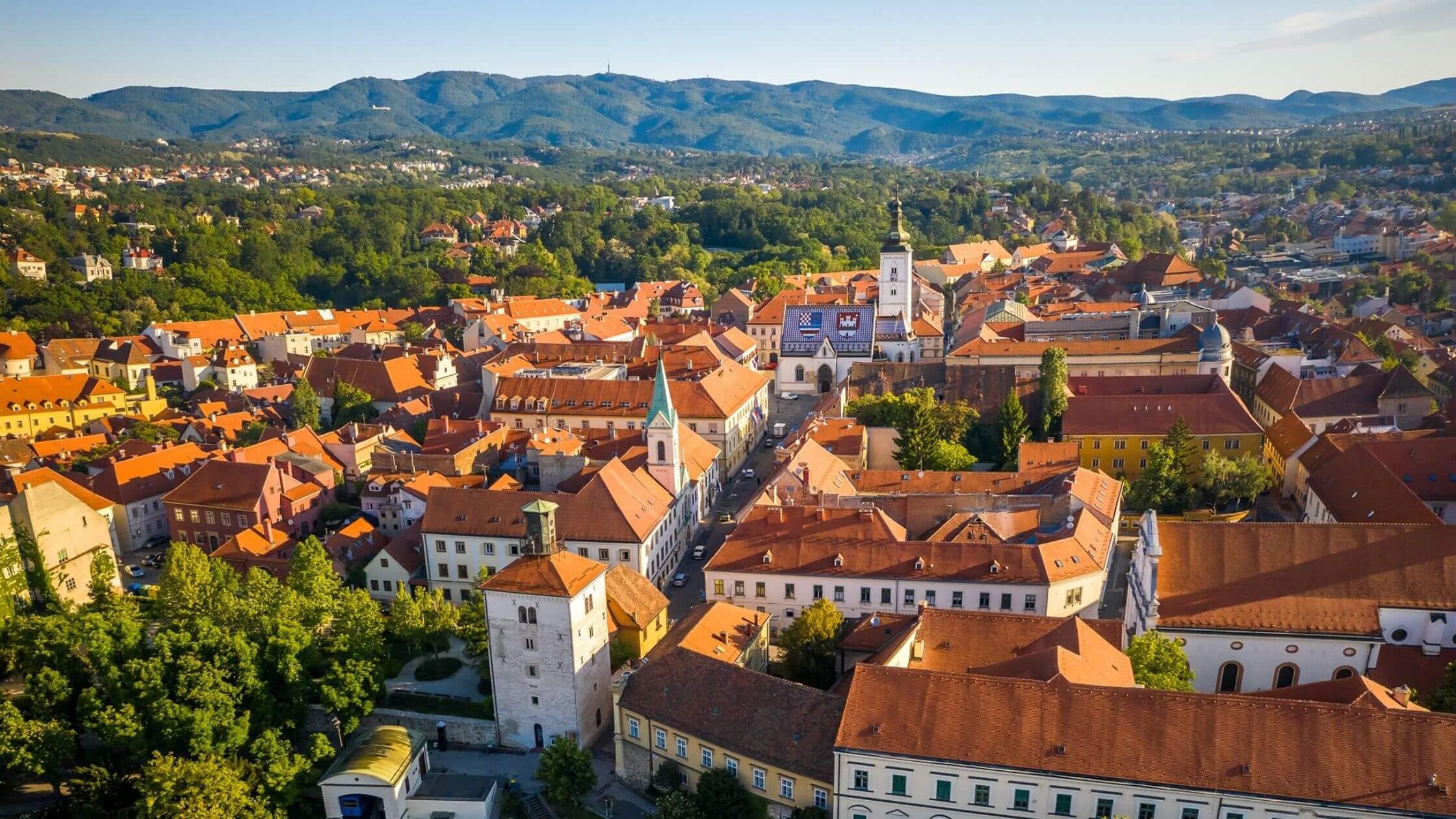
The gorgeous buildings of Upper Town in Zagreb. Visit Zagreb/Facebook.
Cultural landmarks of the city include Ban Jelačić Square which has existed since the 17th century, the Zagreb Cathedral, or the magnificent Croatian National Theater whose unveiling ceremony was attended by Austro-Hungarian Emperor Franz Joseph I. So, make sure you squeeze in some time for a walking tour to absorb the sights of Zagreb’s Old Town.
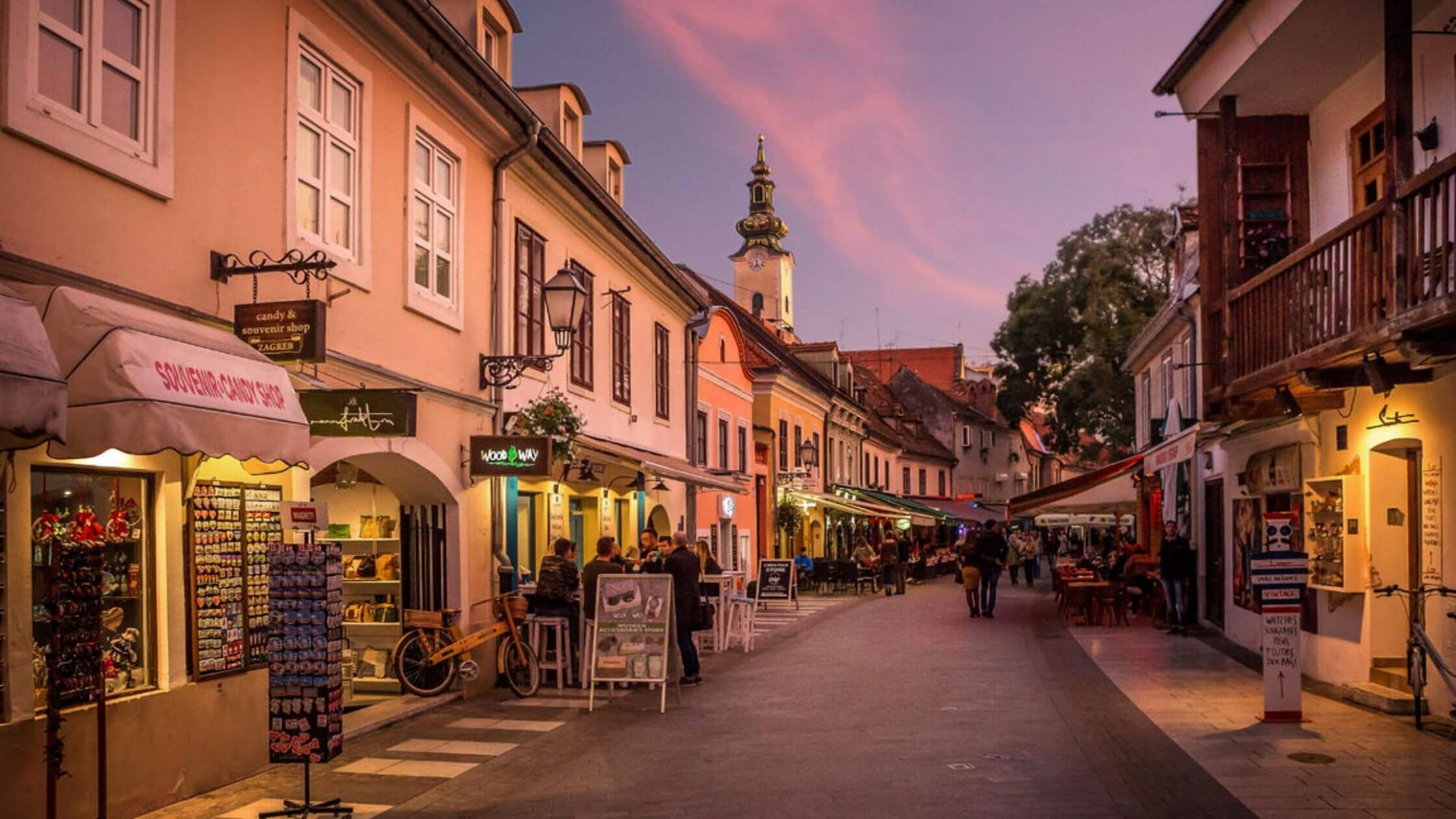
Evenings on Tkalčićeva Street, Zagreb. Visit Zagreb/Facebook.
Hungry? Head to Dolac market, Zagreb's main open-air farmers market to pick up some fresh, seasonal produce and souvenirs. You can also choose to end your day with a tasty meal and local wine from any of the excellent restaurants, bars, and cafes along Tkalčićeva Street.
Day 2: Rovinj
After a bustling day in Zagreb, the enchanting city of Rovinj is a splendid change of pace. Perfectly situated on the Istrian peninsula, the city boasts a rich heritage, from being settled by Venetian tribes, to becoming part of the Byzantine and Frankish Empires, all reflected in the diversity of the city’s architecture, art, and culture.
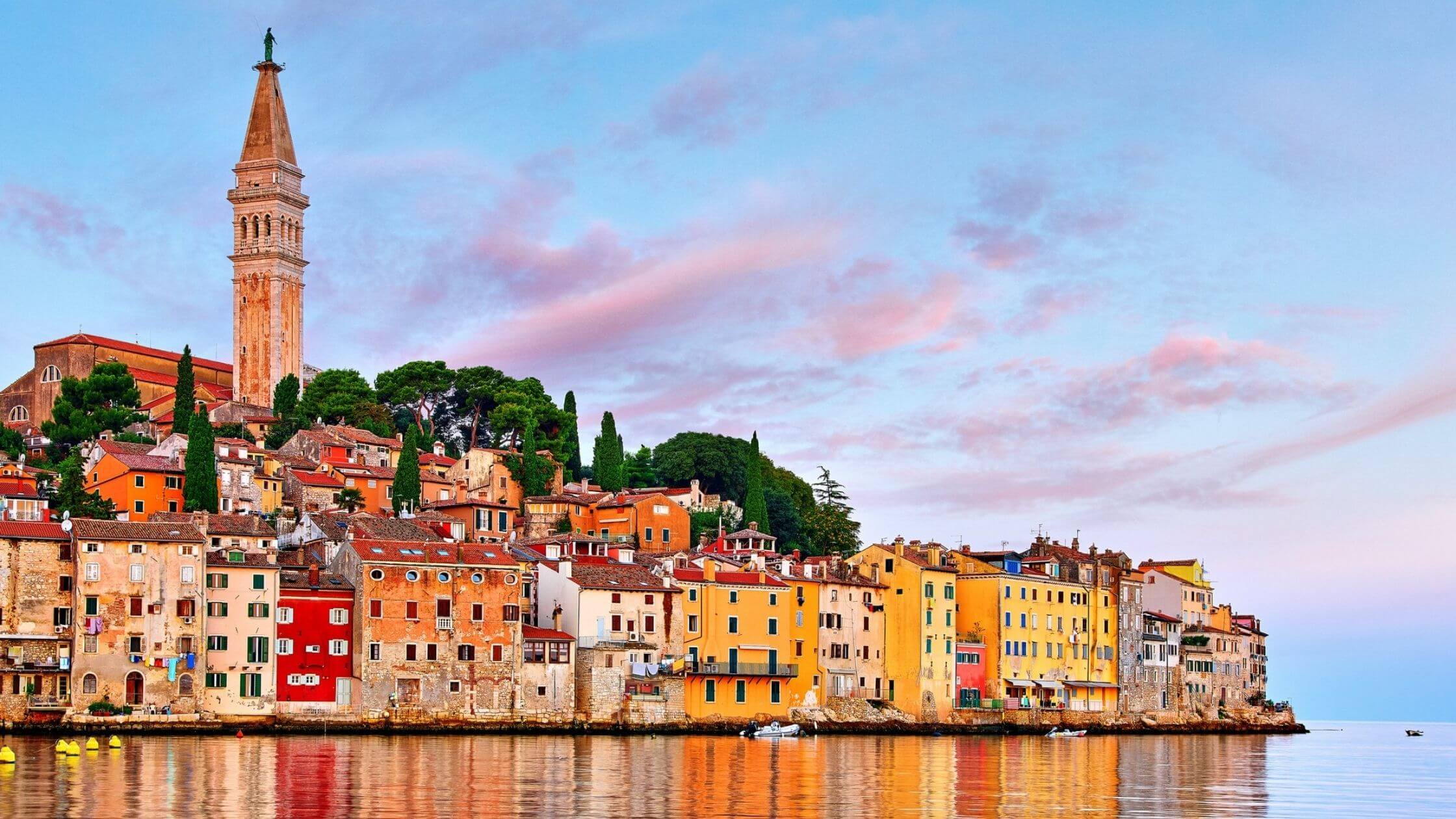
This stunning setting has been a popular film setting for movies such as "The Hitman's Wife's Bodyguard". Rovinj Tourist Board/Facebook.
Stroll along the beautiful cobbled streets and narrow alleys of Rovinj Old Town and make your way towards St. Euphemia Cathedral. Along the way, you should pass by Grisia Street, lined with souvenir stalls and galleries with the most unique pieces to add to your collection.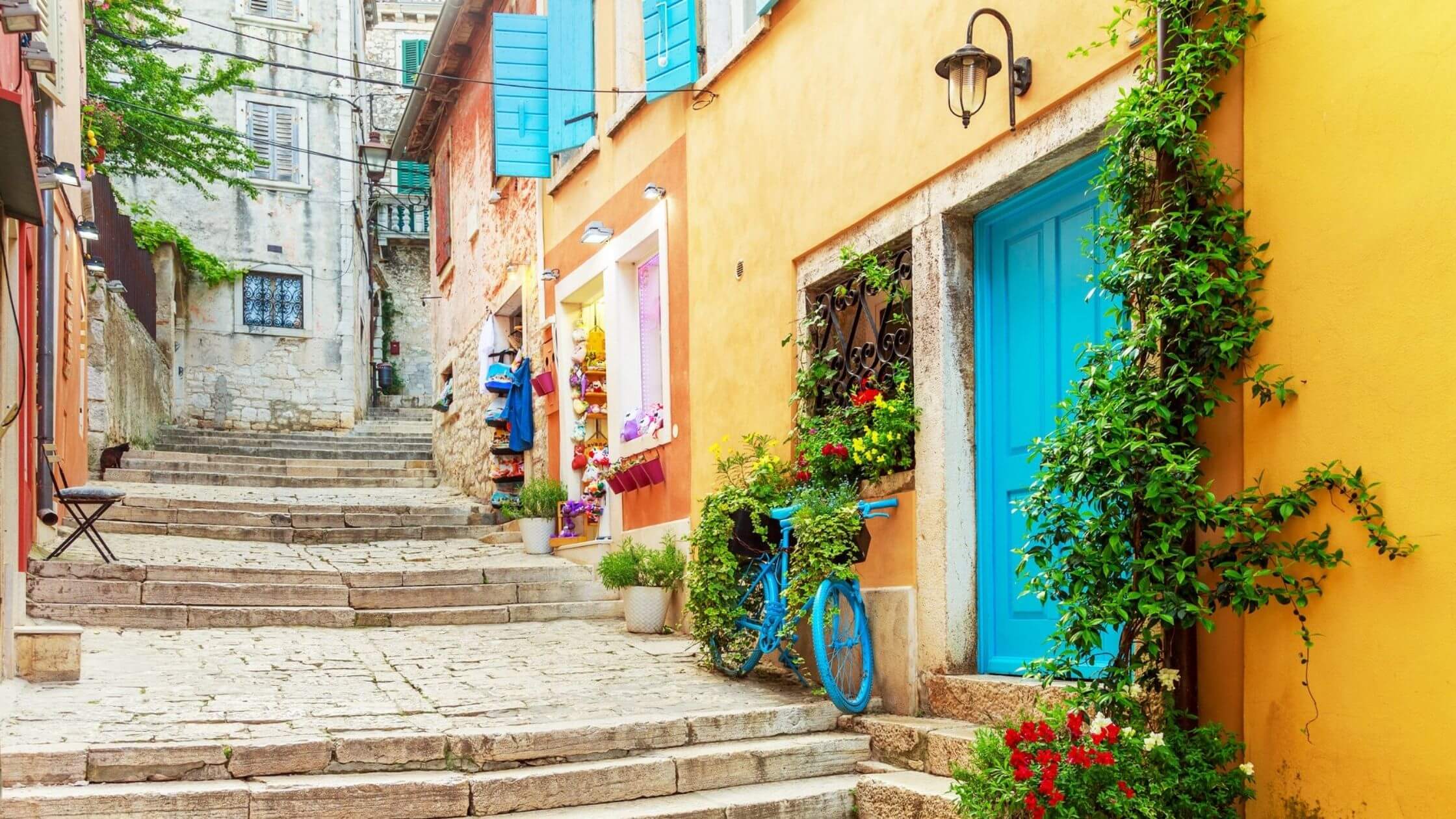
The charming, picturesque streets of Rovinj's Old Town. Rovinj Tourist Board/Facebook.
If you have time to spare, take a day trip to Sveta Katarina, a small picturesque island that’s a mere 10-minute water taxi ride from the pier. Spend the afternoon taking a dip in the aquamarine waters of the bay, or hike on one of the numerous trails dotted around the island, or both!
Alternatively, sit back and relax on some of the most beautiful beaches in Istria such as Amarin, Borik, or Valdaliso Beach.
Day 3: Pula
Before leaving the Istrian Coast, make Pula the next stop on your road trip. Serving as the capital of Istria, Pula was the main military port for the Austro-Hungarian Monarchy at the height of its military glory. Today, remnants of these times are reflected in the city’s breathtaking landscape.
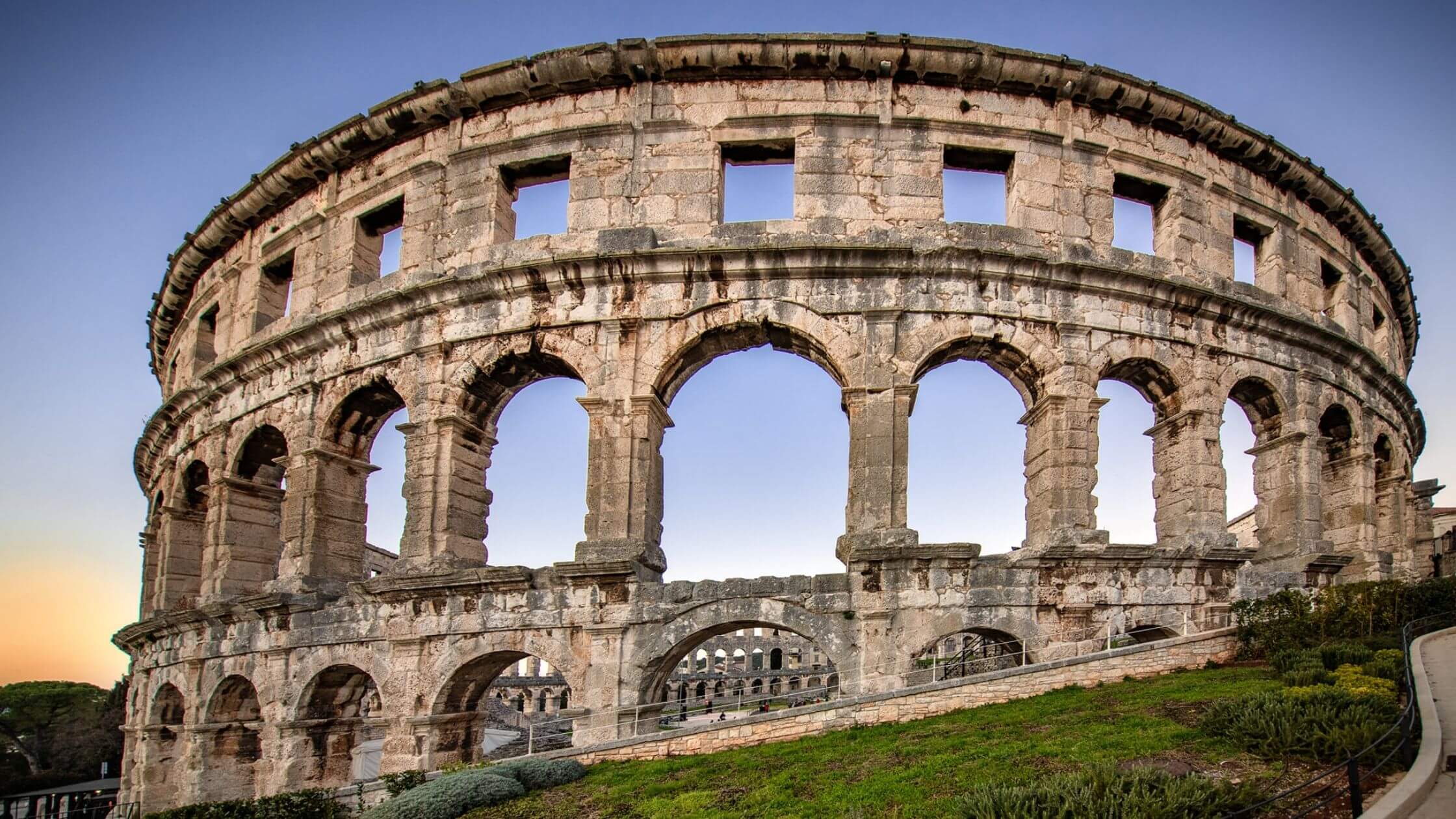
The Pula Arena frequently hosts concerts and festivals throughout the year. Pula Plus/Facebook.
The famous Pula Arena, one of the most well preserved Roman amphitheaters in the world, is a must-see! Another not to be missed landmark is the Temple of Augustus, a monument dedicated to the first Roman emperor in honor of his rule.
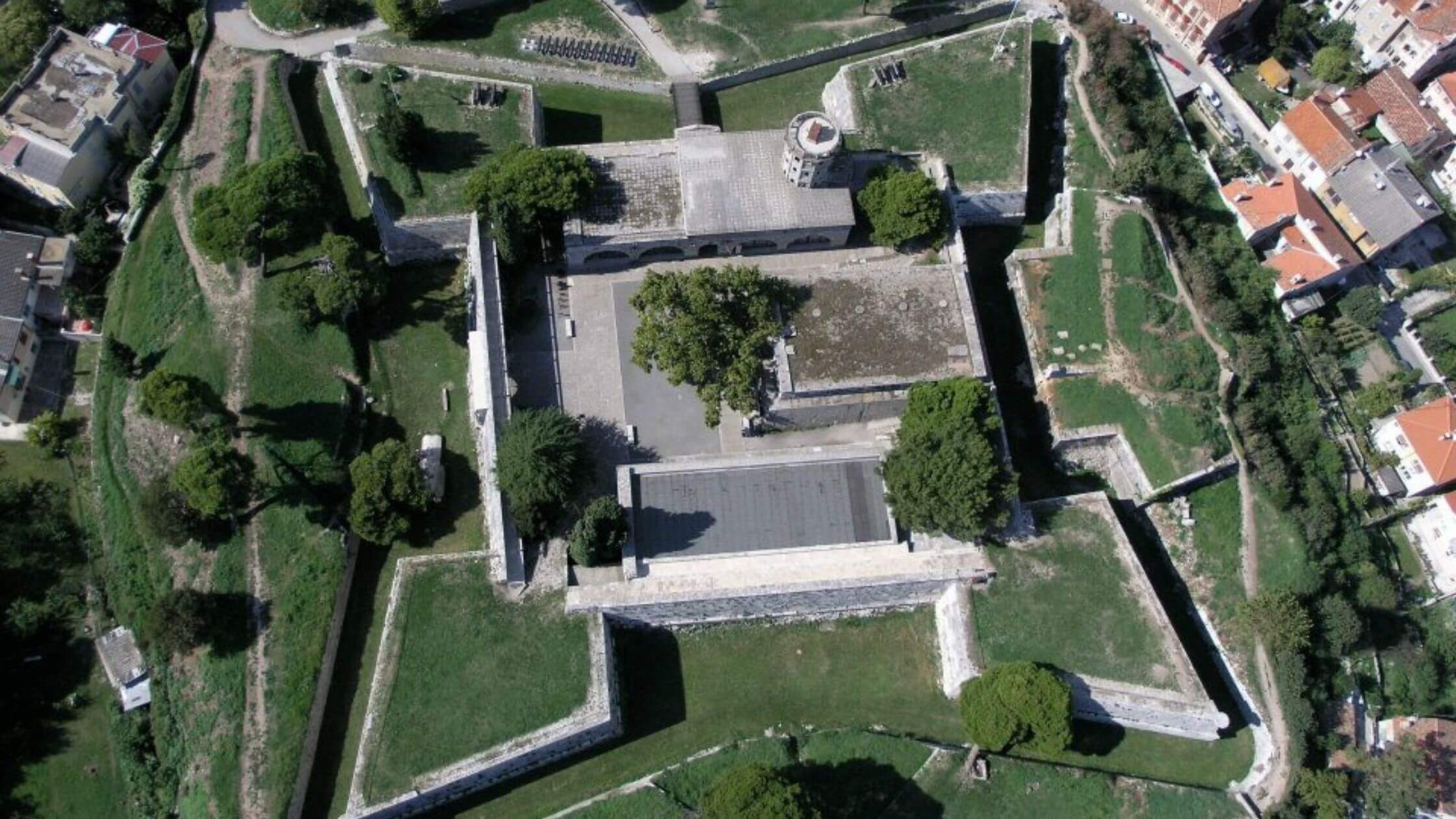
The unique shape of Fort Puna Christo. Pula Plus/Facebook.
Also check out the impressive Fort Punta Christo, which includes an underground section to explore and a well-stocked rooftop bar for refreshments after. You can also enjoy magnificent 360-degree views of Pula from the Venetian Fortress (Kaštel) which also houses the Historical and Maritime Museum of Istria.
Day 4: Plitvice National Park
Although Croatia boasts some of the best coastlines in the world, Plitvice Lakes National Park consistently appears in the top must-see places to visit in Croatia, and for good reason! This UNESCO World Heritage Site holds the title as the oldest and largest national park in Croatia, famous for its gorgeous turquoise lakes. Well worth the detour inland.
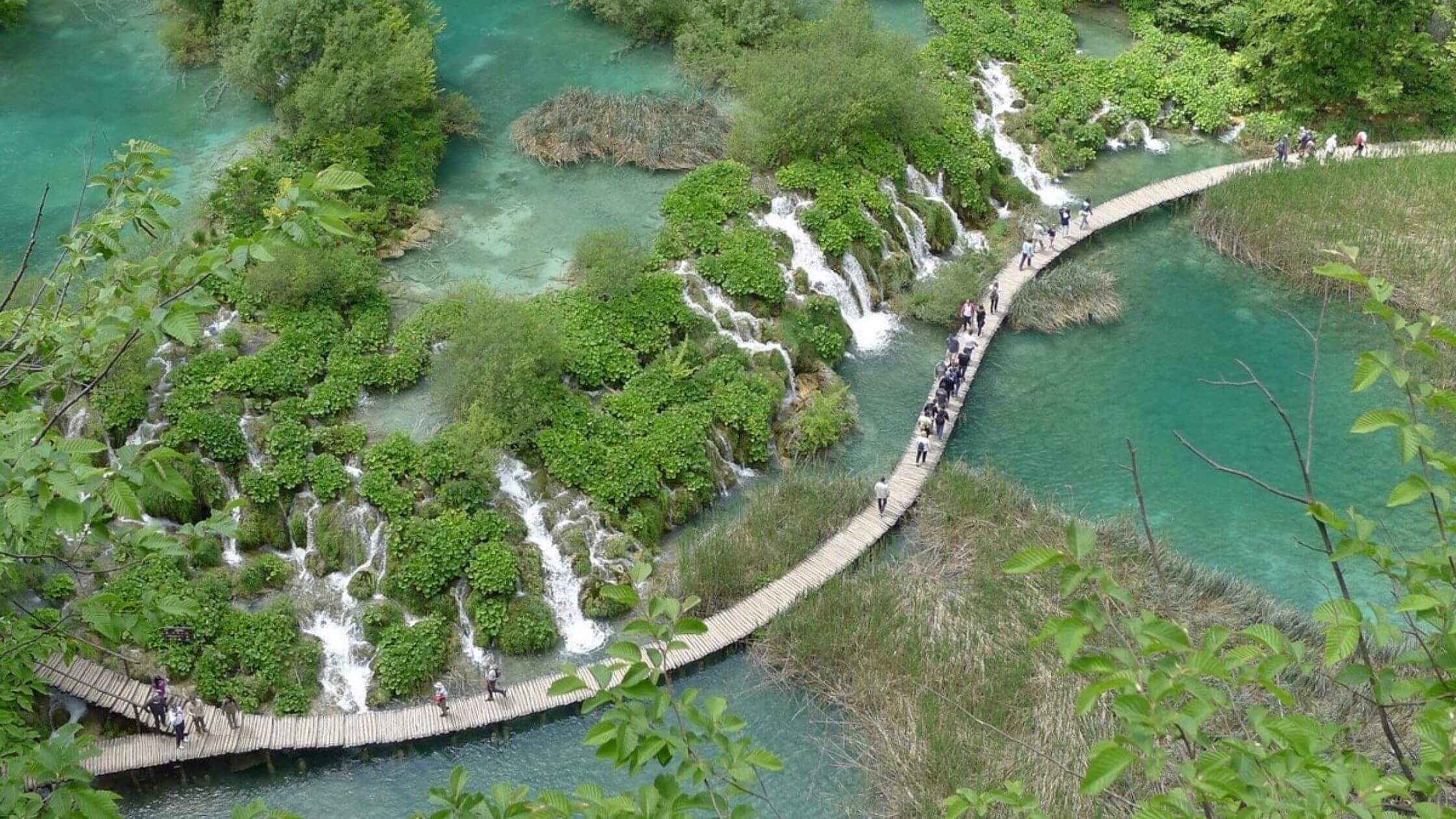 The main walkway of Plitvice Lakes National Park. Plitvice Lakes National Park/Facebook.
The main walkway of Plitvice Lakes National Park. Plitvice Lakes National Park/Facebook.
Be aware that the park can get very crowded during the season! To avoid this, just be prepared to visit early (7-8am), or better still, stop by during off-peak seasons where the park transforms into the perfect winter wonderland.
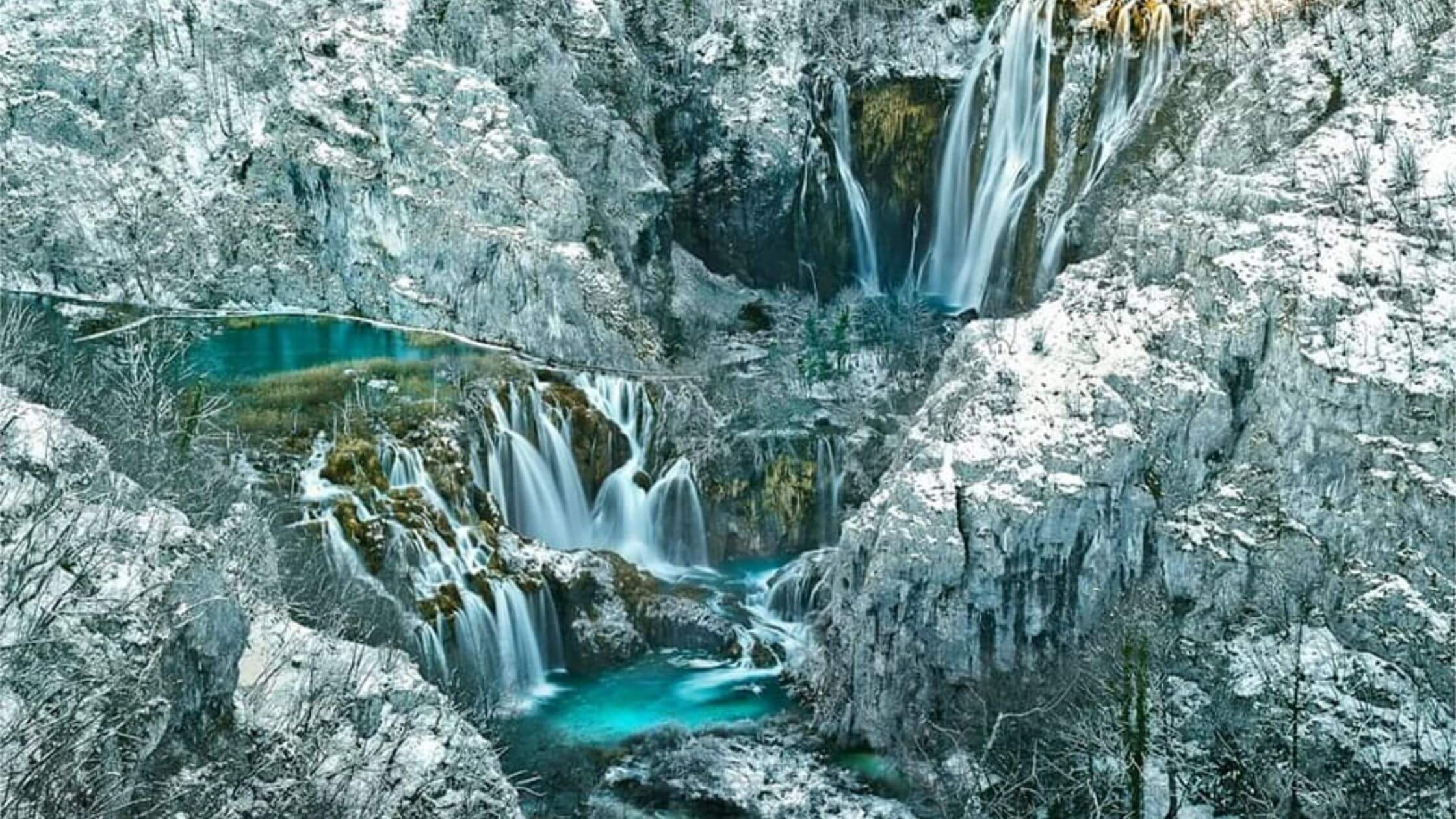
Plitvice Lakes National Park/Facebook.
Day 5: Zadar
After a day in the lush forests, take a scenic drive back to the Dalmatian coast and spend a day in the charming city of Zadar, the oldest continuously inhabited Croatian city. Today, cozy cafes and art galleries are seamlessly woven into remains from the times of Julius Caesar and Emperor Augustus.
Enjoy a relaxing stroll through Old Town and admire the historical architecture including the Church of St. Donatus, the Landward Gate, the Cathedral of St. Anastasia, and the Roman Forum.
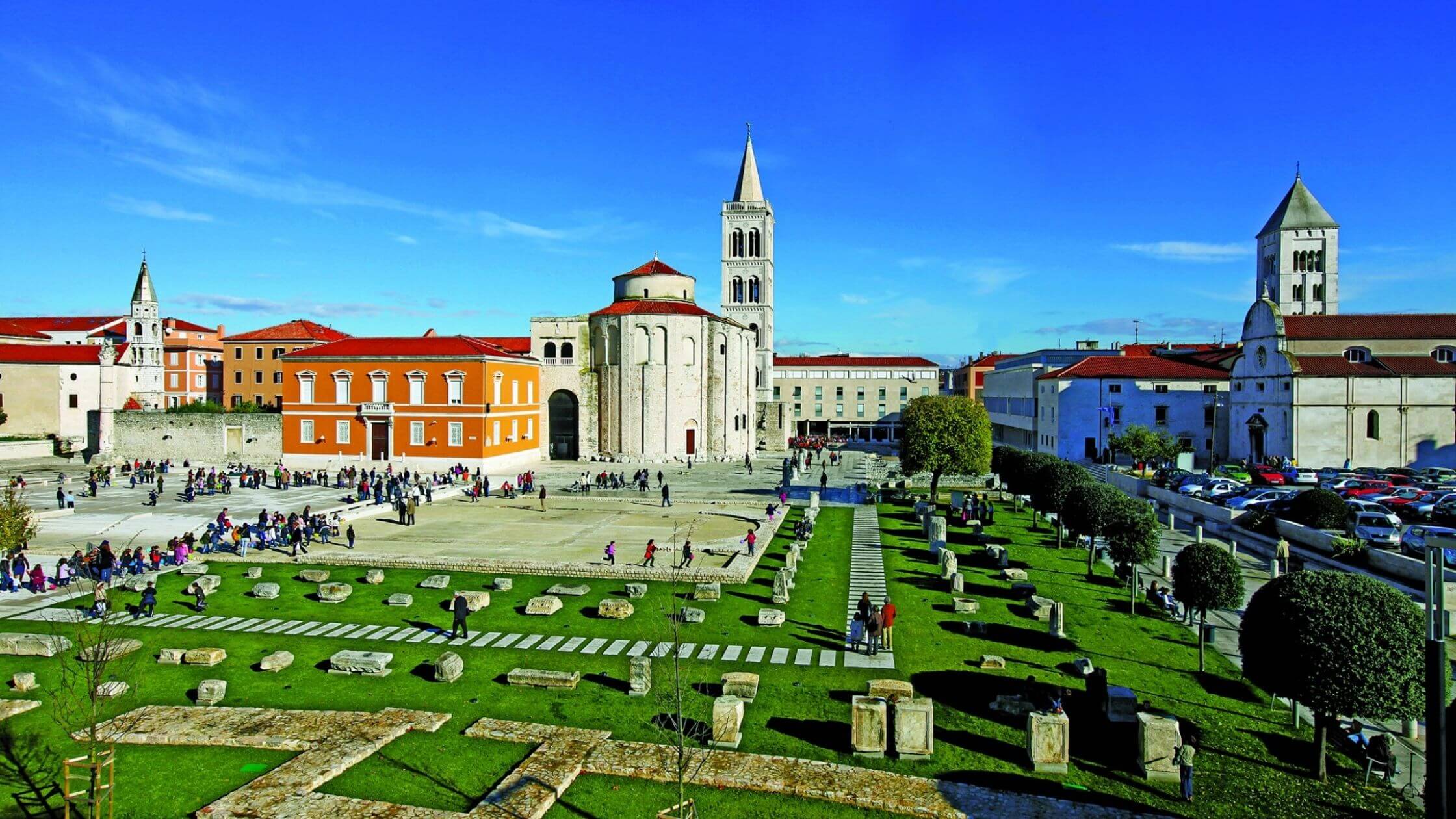
Ruins in the Old Town of Zadar. Zadar Region/Facebook
Along the way, catch the famous Sea Organ, and a sunset so beautiful, it even captivated Alfred Hitchcock! Just after sunset, take in the light show at the Sun Salutation, an installation created by Nikola Bašić, the same artist who designed the sea organ.
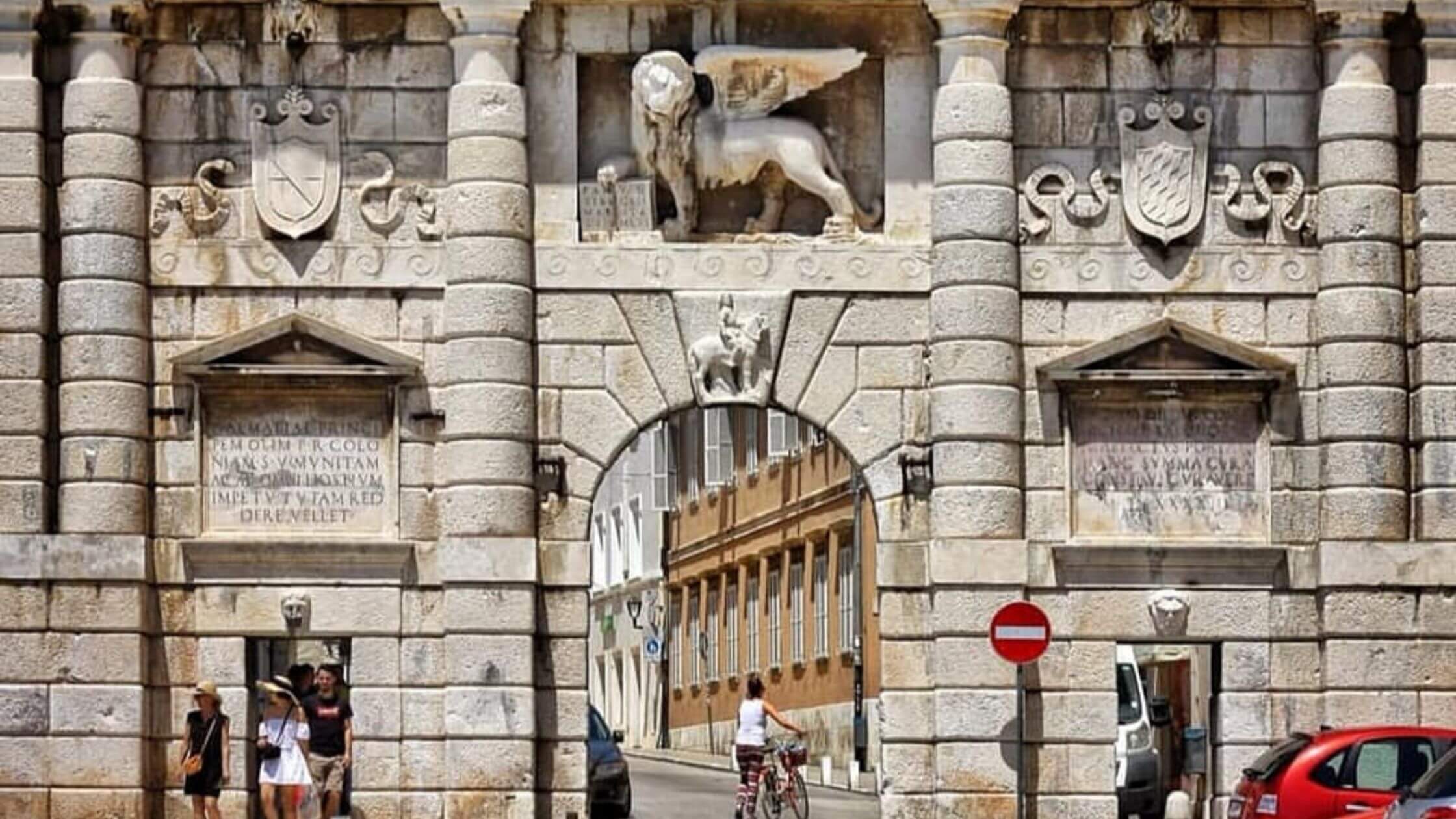
The Landward Gate, Zadar. Zadar Region/Facebook
If you have some time in between, head to Pag Island to try some of the famous Paski Cheese or to Nin, home to Queen’s Beach, the longest sandy beach in Croatia. Other gorgeous beaches along the coast of Zadar include Kolovare and Borik.

Award-winning sheep's cheese from Pag Island. Pag Tourist Board/Facebook.
Day 6: Split
Welcome to Split, the largest city in Dalmatia, and second-largest in all of Croatia. The city was founded as the Greek colony of Aspálathos between the 3rd and 2nd century BC.
It was later where Diocletian's Palace was built for the Roman emperor in AD 305. The palace also houses the Peristil, or the main square, another great place to enjoy some coffee and people-watch in addition to the Riva promenade.
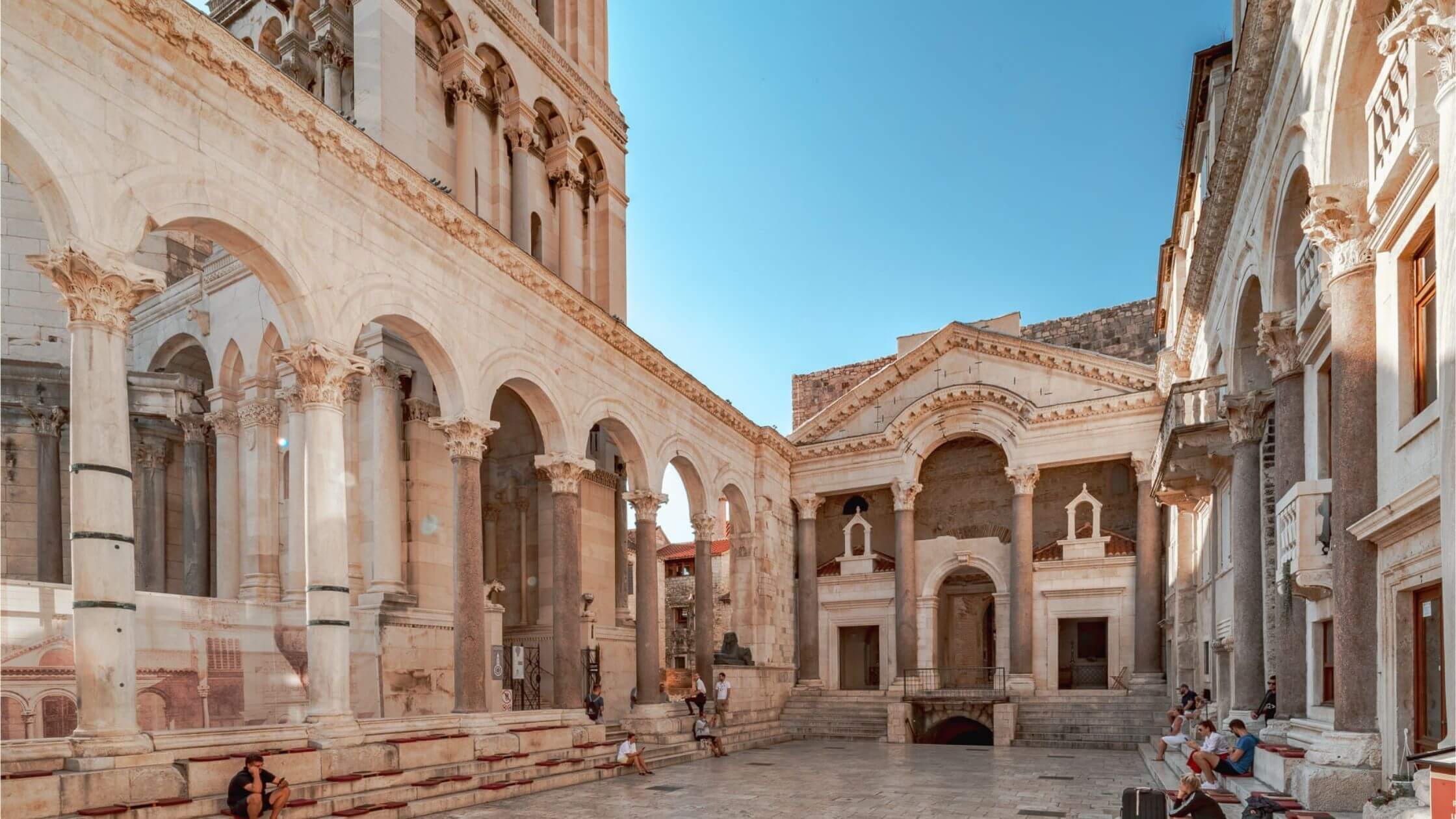
Enjoy a drink inside the walls of the Diocletian's Palace, Split. Visit Split/Facebook
While exploring the Old Town, stop by the Green Market, the largest farmer’s market in Split, to pick up some fresh, organic produce. Turn the corner and it is difficult to miss the 8.5-meter statue of Gregory of Nin, sculpted by world-renowned artist Ivan Meštrović. Rubbing the statue’s toe is said to bring good luck, so much so that it has been worn smooth by visitors over the years.
You can also squeeze in a light hike up Marjan Hill, also known as the “lungs of Split”. Its summit is an ideal place for a picnic, offering marvelous views of the harbor and neighboring islands.
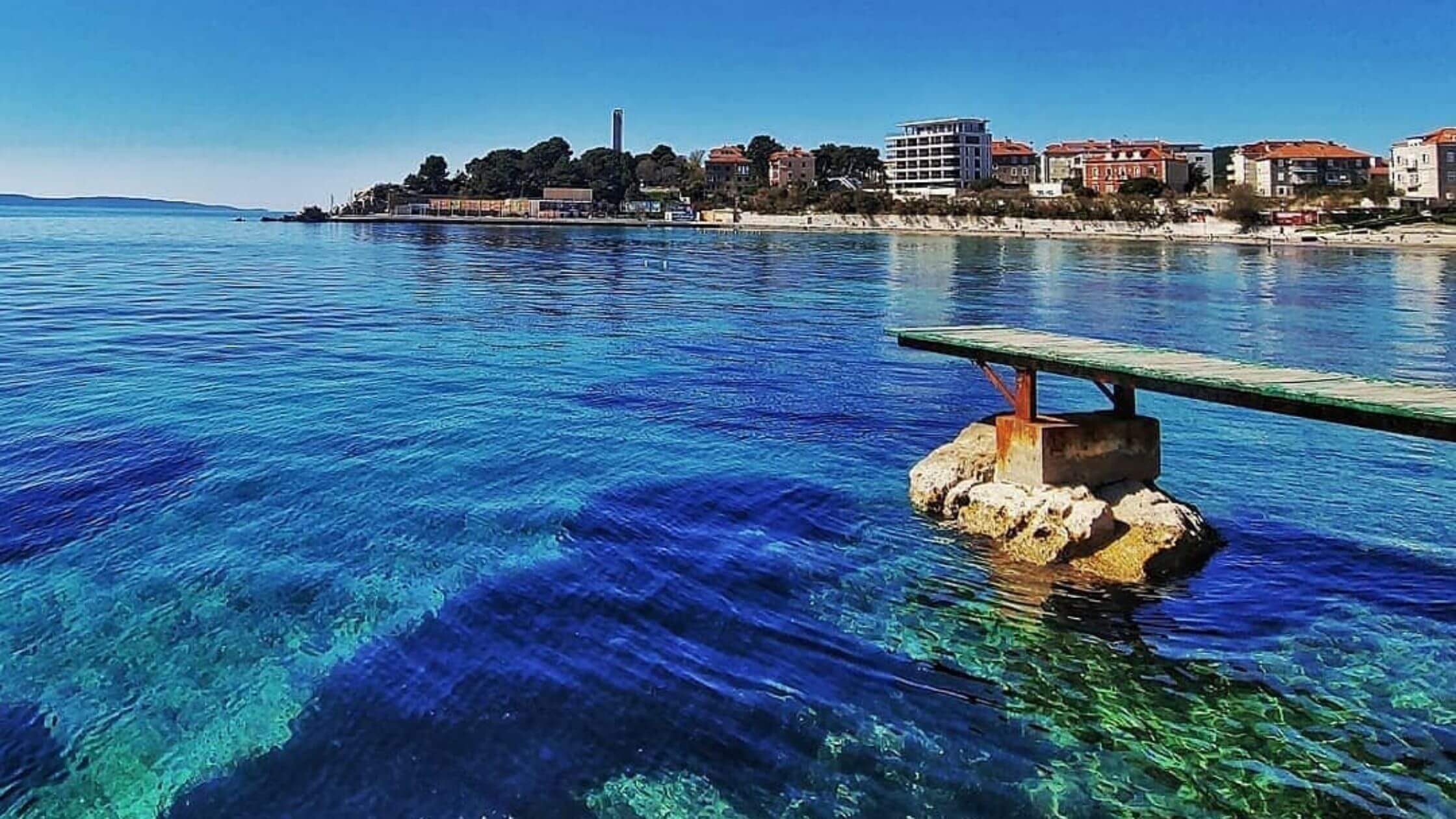
The crystal clear waters of Bačvice beach. Visit Split/Facebook
Fancy another beach day? Bačvice beach is a popular hangout spot in the center of Split. Relax at one of the many cafe bars and watch the locals play picigin, a traditional ball game. Rumor has it this beach is also where the sport originates from.
Day 7: Krka/Omiš/Trogir
Don't be too quick to leave Split. From here, there are several options for day tours to surrounding attractions.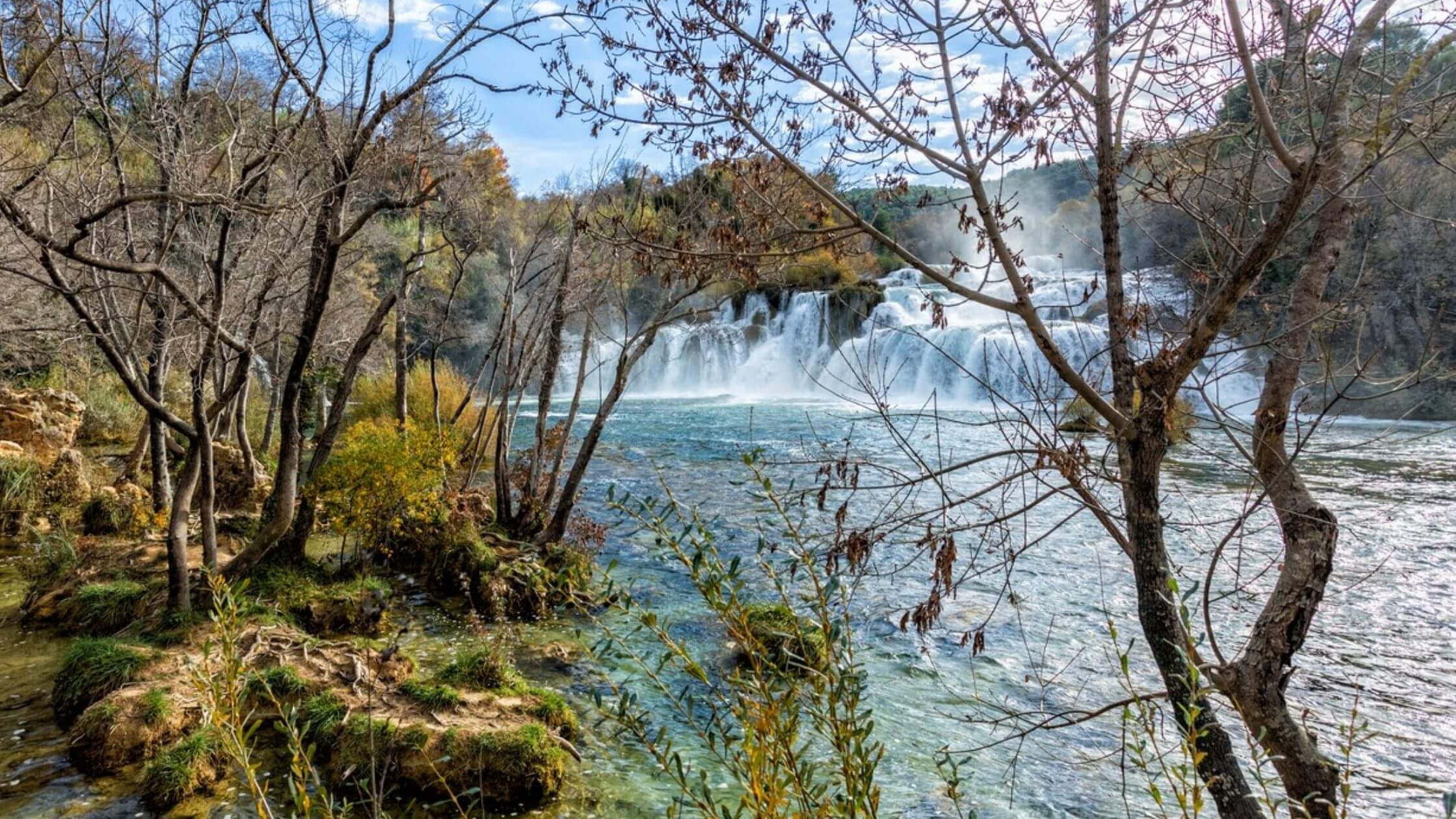
Some of the most stunning waterfalls in Croatia can be found at Krka National Park. Krka Nationa Park/Facebook
For nature lovers, Krka National Park is another national park about an hour’s drive from Split. Spend a day walking along well-maintained trails that wind along some of the most stunning waterfalls in the country. Again, make sure you get there early to avoid the crowds!

Try white water rafting in Omiš. Tourist Board Omiš/Facebook
For those craving more action, head to the picturesque town of Omiš which offers one of the most dramatic scenes on the coast. The city is nestled in a canyon surrounded by gray, craggy mountains, contrasting the peacock blue waters where the Cetina River meets the Adriatic Sea. Omiš offers white water rafting, free climbing, ziplining, abseiling, and canyoning, amongst other activities for visitors seeking a bit of a thrill on their vacation.
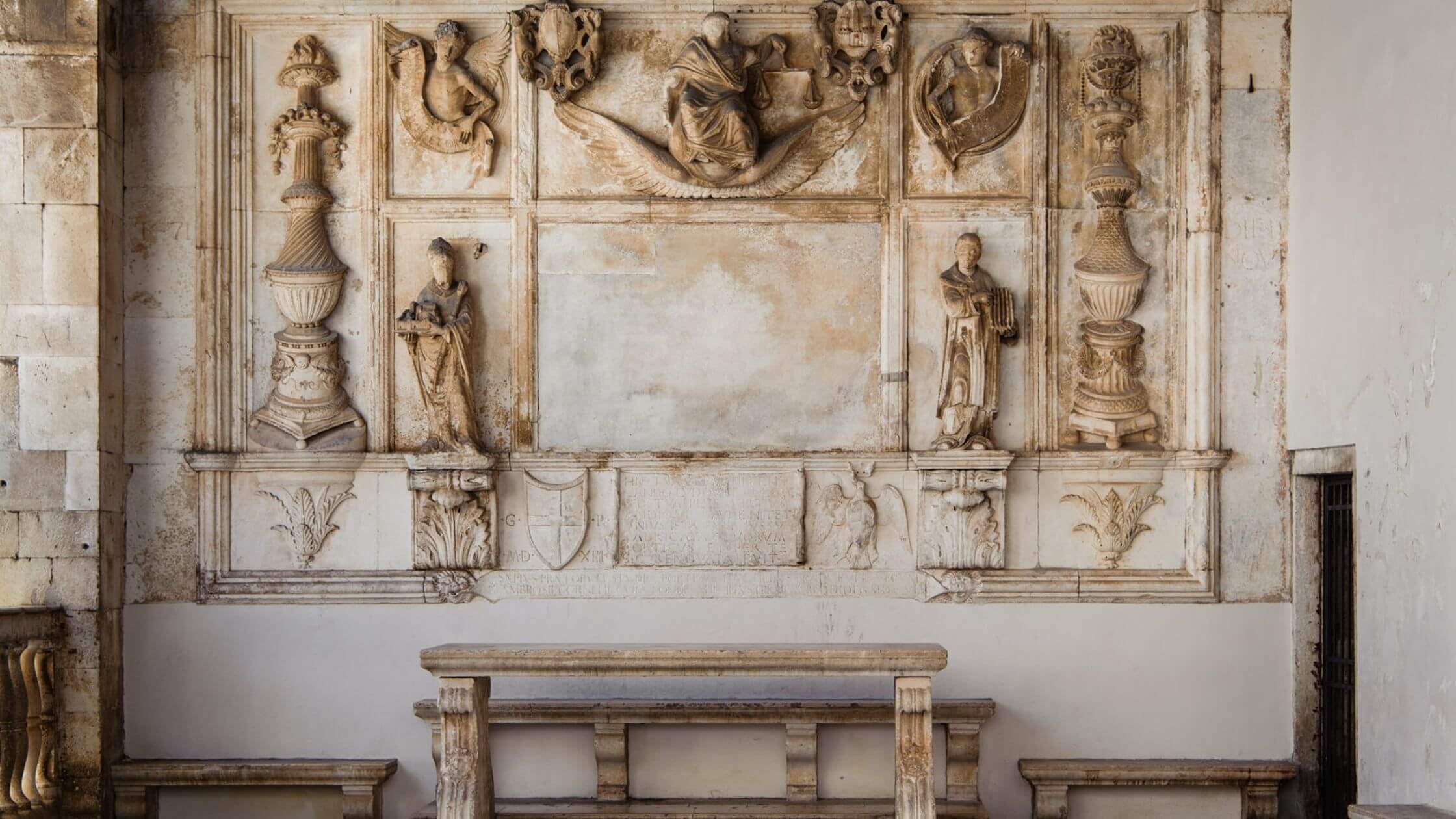
Just one of the many well-preserved remains scattered around Trogir's Old Town. Visit Trogir/Facebook
For the history buff, head to Trogir which has the best-preserved Romanesque-Gothic complex in all of Central Europe. Take a walk around the Old Town, surrounded by walls comprising a series of dwellings and palaces from the Romanesque, Gothic, Renaissance, and Baroque periods.
Day 8: Hvar
With over 1,000 islands, it wouldn’t be a complete trip to Croatia without doing some island hopping. From Split, take the 1-hour ferry ride over to Hvar. Its beauty and vibrant nightlife have made it a regular vacation spot for the likes of celebrities such as George Clooney and Beyonce.
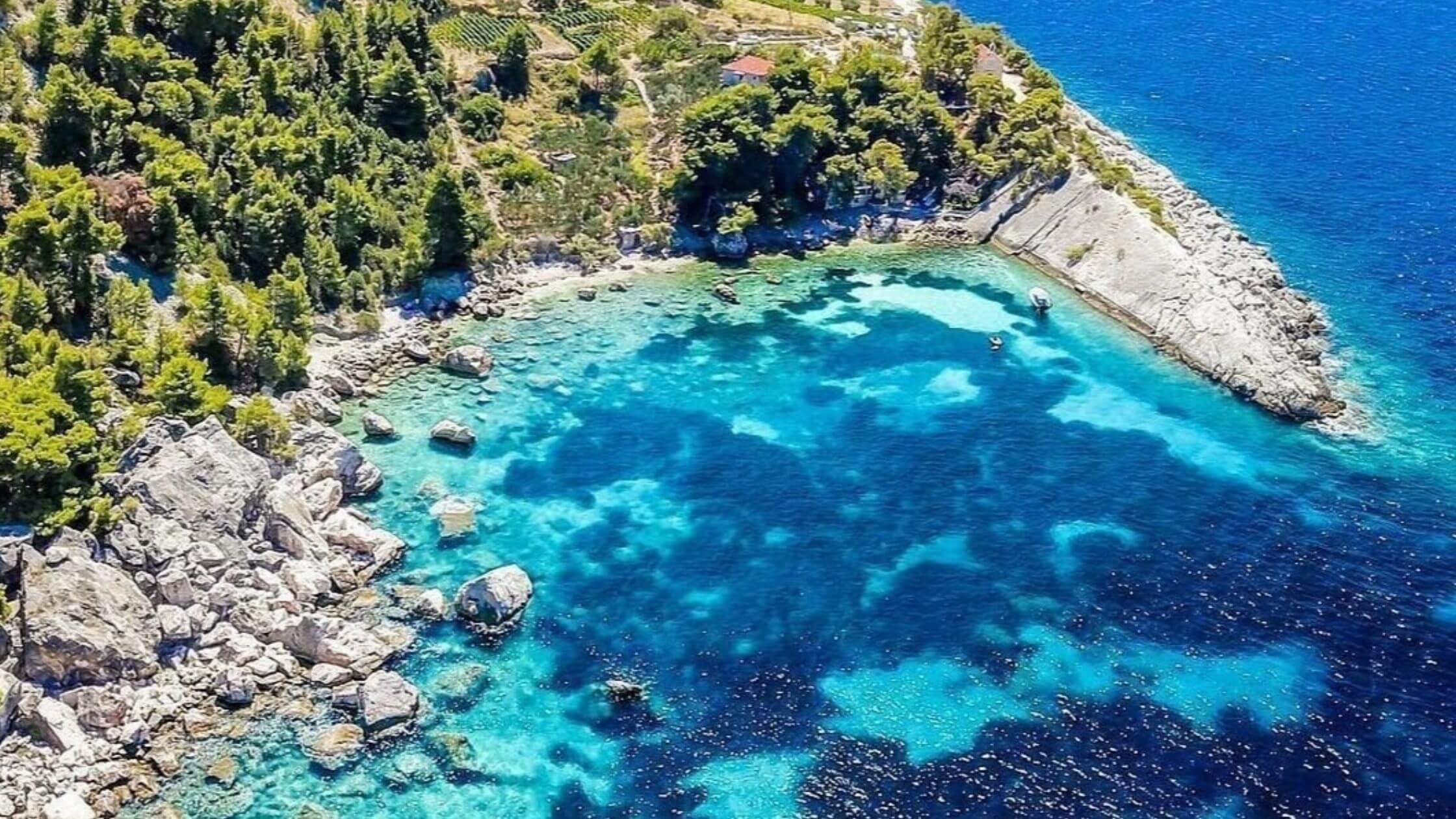
Hvar is one of the longest and sunniest islands in Croatia. Hvar Tourist Board/Facebook
Start by wandering around St. Stephen’s Square, the largest square in Croatia and don’t miss the Cathedral of St. Stephen and the Hvar public theater. For the best view, climb to the top of the Španjola Fortress to get an unobstructed view overlooking Hvar Town and nearby Pakleni Islands. You can even rent a small boat (no license required) to explore these islands on your own!
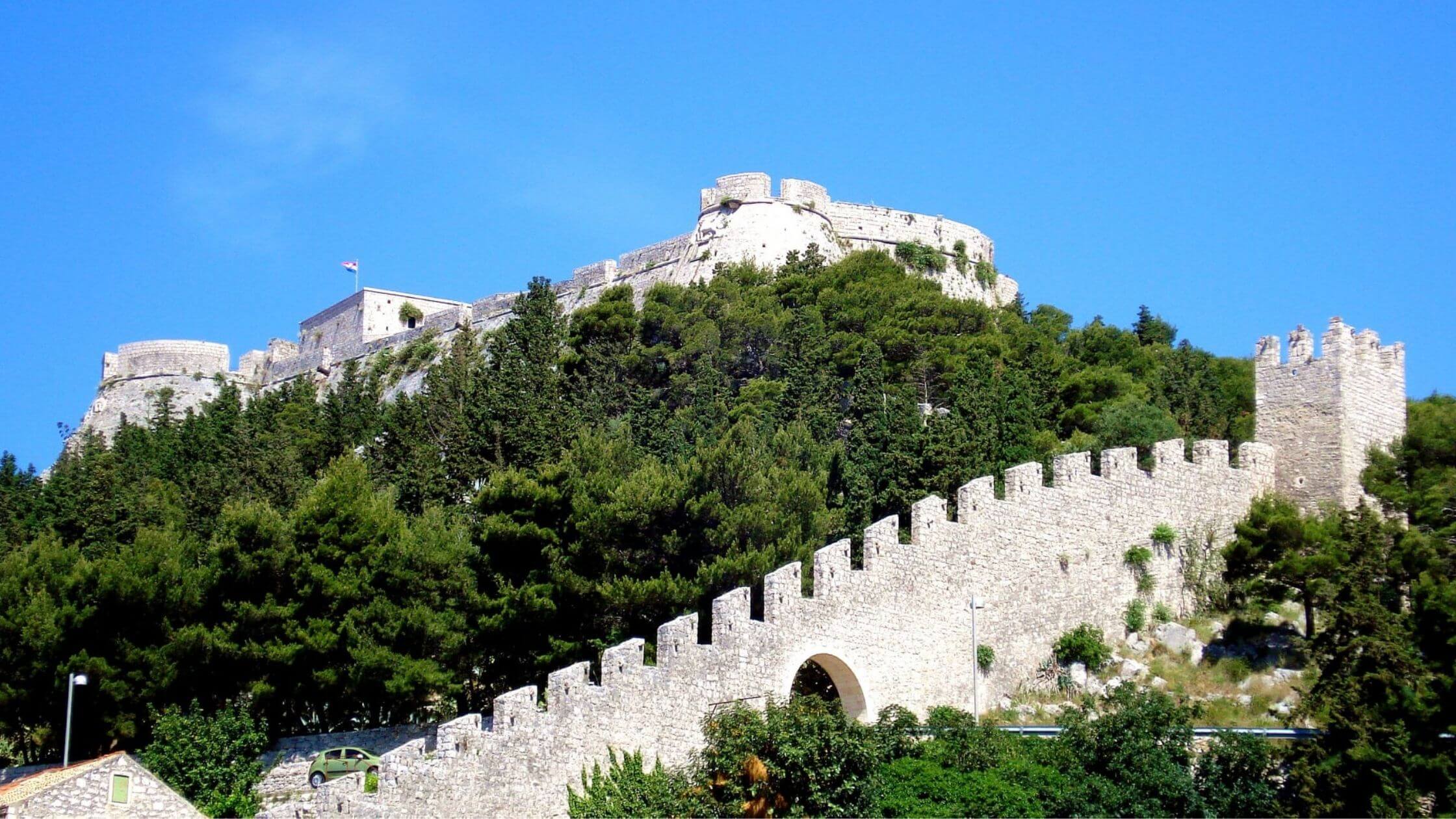
The view from the top of the Španjola Fortress is unparalleled on the island. Hvar Tourist Board/Facebook
Once you’ve taken in all these sights, enjoy another relaxing beach day at one of the many pristine beaches such as Malo Zaraće, Dubovica, or Pokonji Dol.
Alternatively, if you’re looking for another day trip, book a tour with one of the local travel agencies to the Blue Caves on Biševo and marvel at its clear, iridescent blue waters.
Day 9: Korčula
After the buzz of Hvar, take the ferry to the tranquil town of Vela Luka on the island of Korčula, the birthplace of famed explorer Marco Polo and home to some of the best Croatian wines.
From Vela Luka, take a scenic drive towards the town of Korčula, also known as “little Dubrovnik”. Along the way, stop by the numerous family-run vineyards that welcome visitors for wine and cheese tastings.
Grk is a white wine variety grown almost exclusively on Korčula, other white wines such as Pošip and Rukatac are also premier Croatian wines, often served on celebratory occasions. For fans of red wine, do grab a bottle or 2 of Plavac Mali.
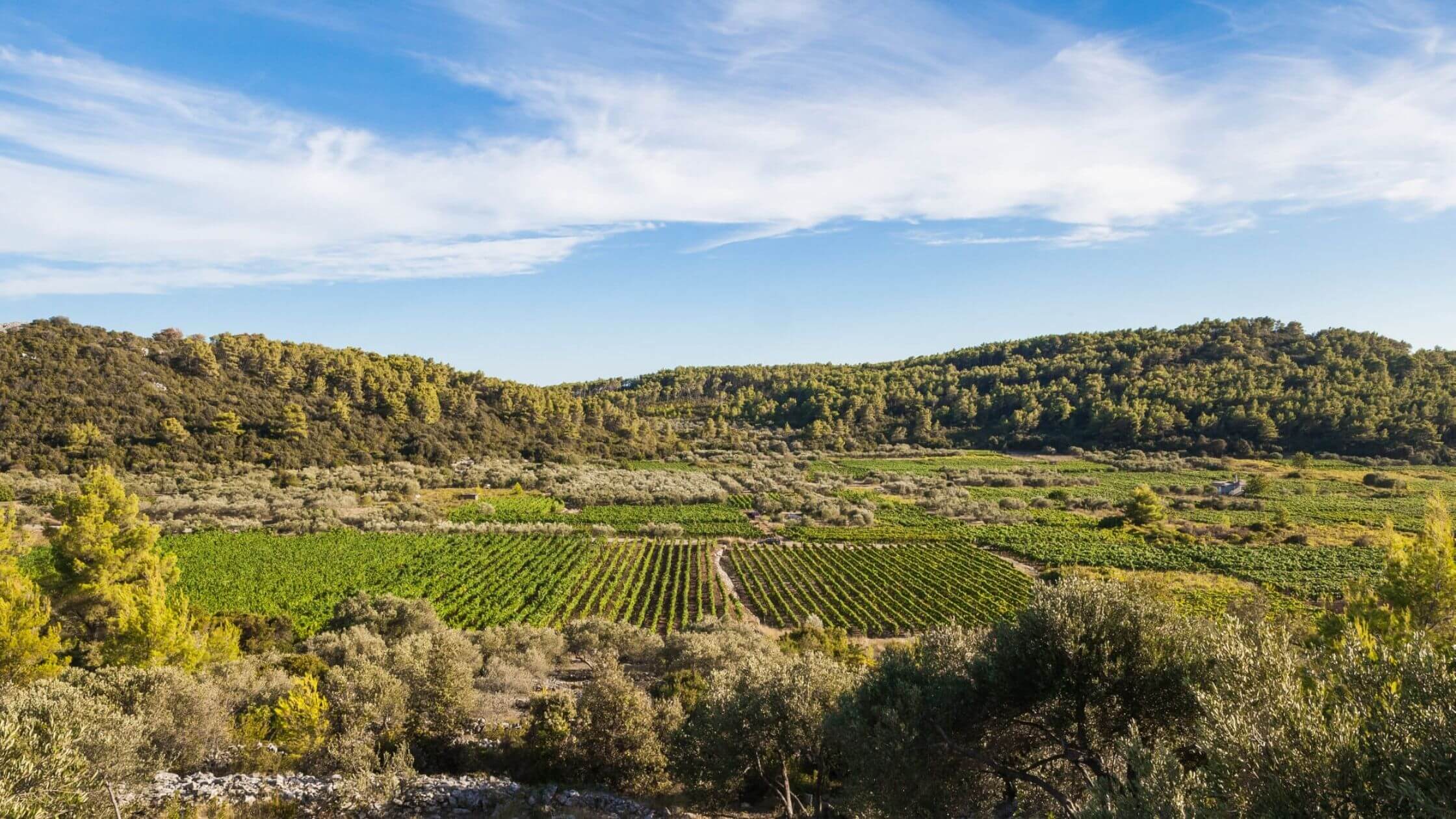
Vineyards of Korčula island. Visit Korčula/Facebook
In Korčula, walk off the afternoon’s indulgences exploring the streets of the Old Town with its architectural influences by the Venetian Renaissance, before capping off the night with a meal and more wine at any of its superb restaurants.
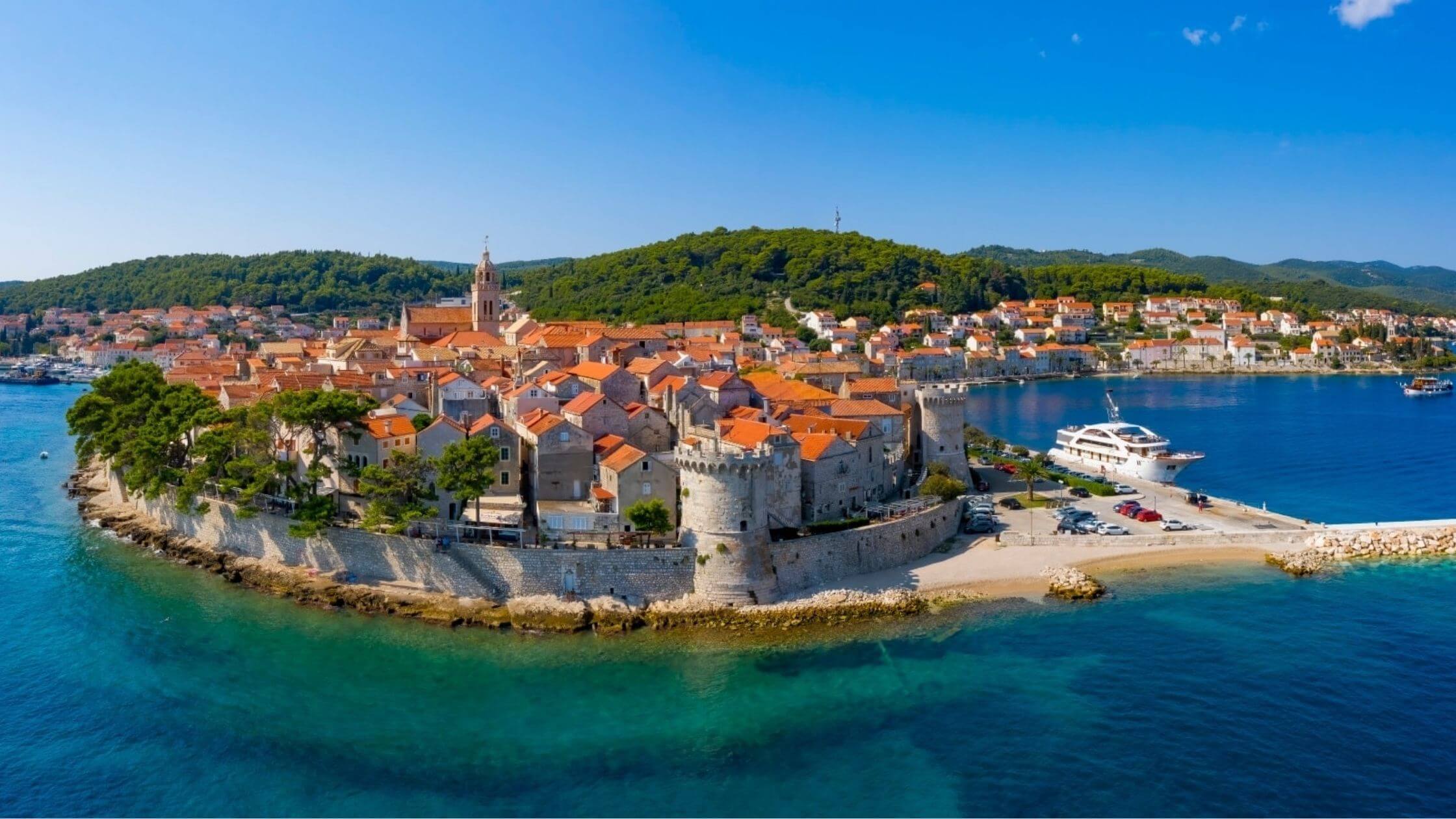
Korčula town. Visit Korčula/Facebook
Day 10: Dubrovnik
There’s no better way to end the trip than with Dubrovnik. And yes, there is no shortage of Game of Thrones tours to indulge your senses, but there is so much more to this medieval city than where Cersei Lannister did her walk of shame.
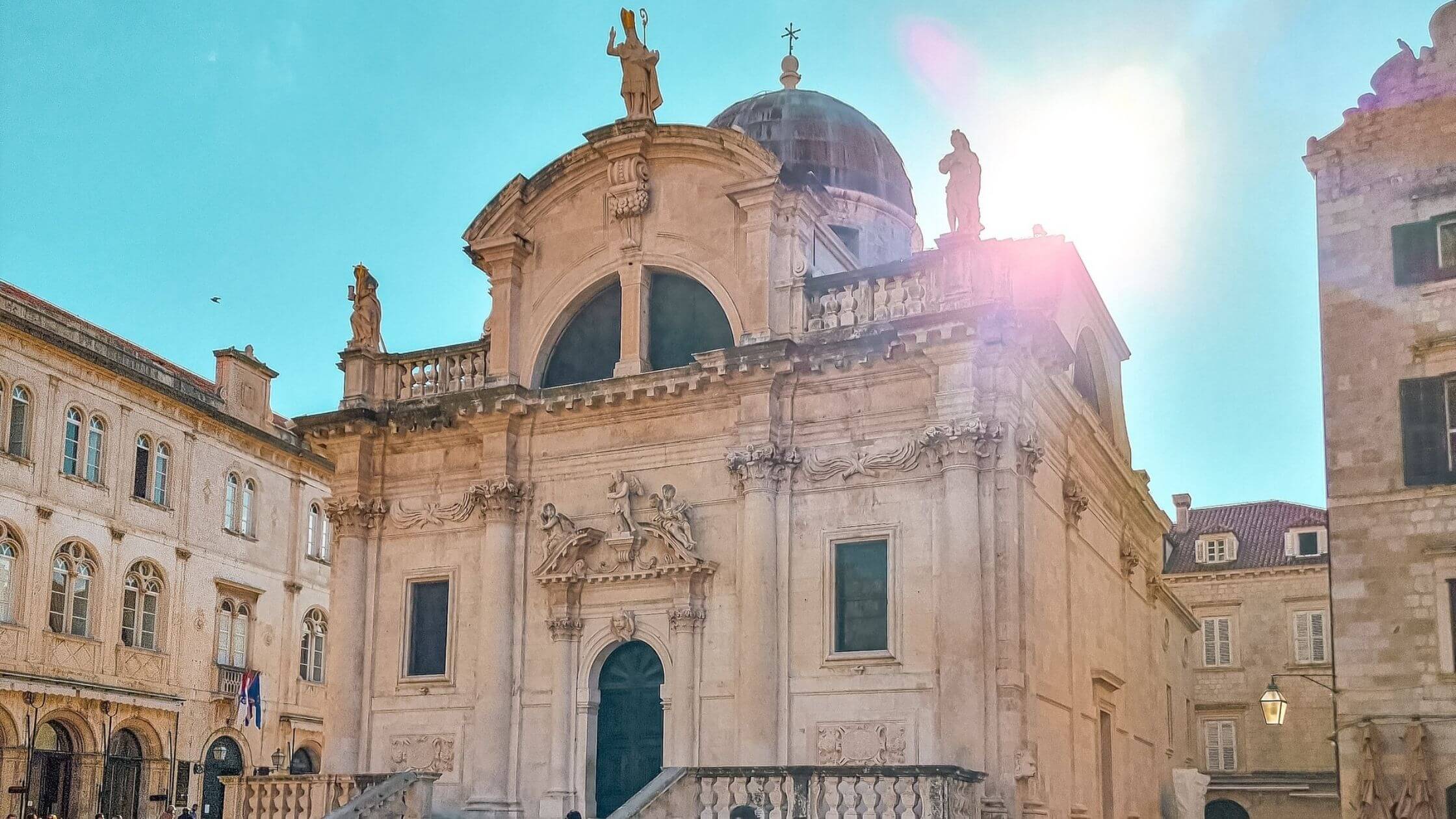
The beautiful Saint Blaise's Church in Dubrovnik was built during the 10th century. Dubrovnik Tourist Board/Facebook
Talk a walk along the city walls and through Stradun, Dubrovnik’s main street. From here, you can also catch Onofrio’s Large Fountain that used to supply Dubrovnik with fresh water during the Middle Ages and other impressive structures including the Clock Tower, Saint Blaise's Church, Saint Ignatius Church, Cathedral of the Assumption, and the Franciscan Monastery.
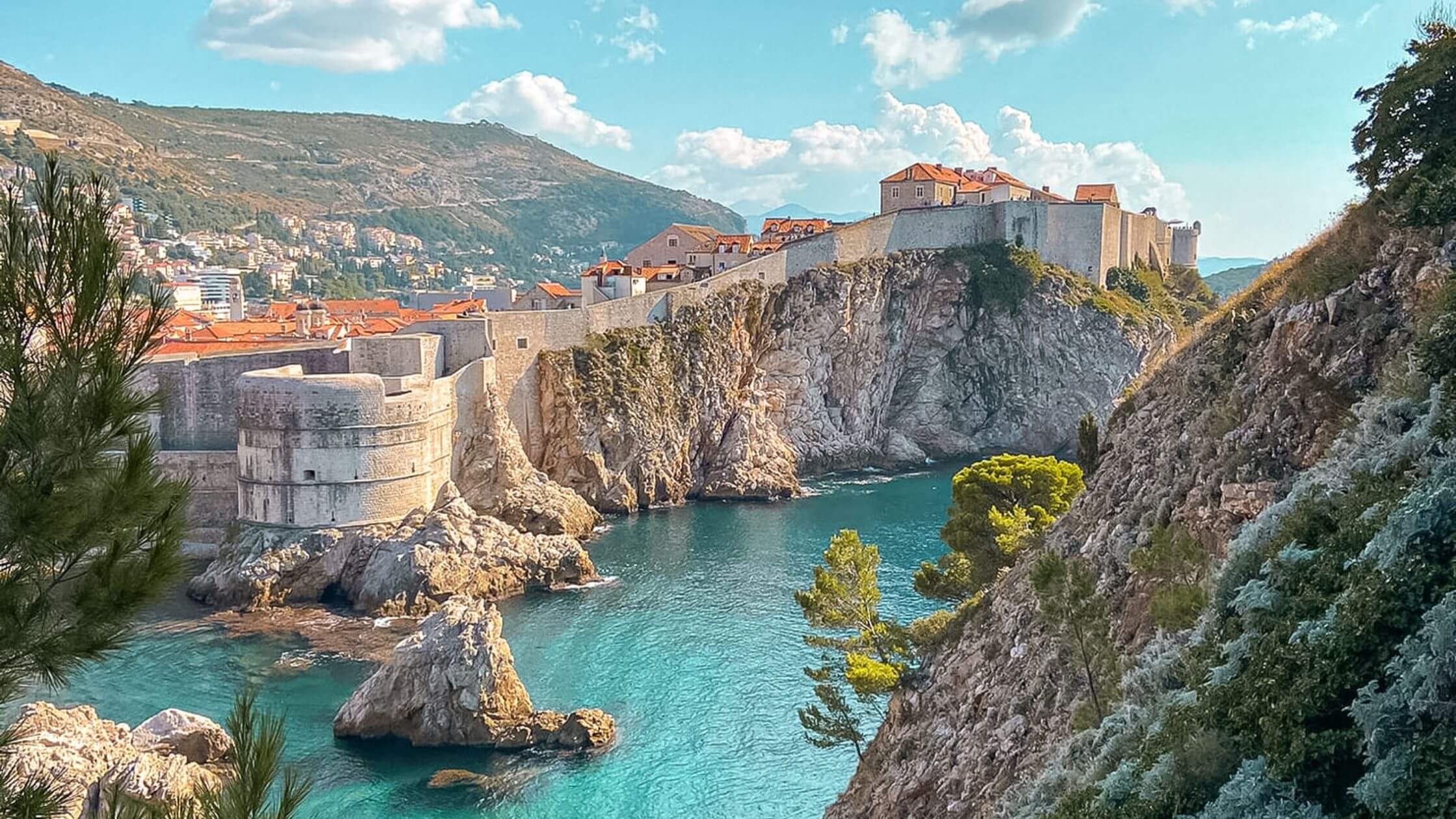
The view from beyond the walls of Dubrovnik looking upon Fort Lovrijenac. Dubrovnik Tourist Board/Facebook
Watch the sunsets and reminisce on your amazing road trip through the country at one of the cliff bars along the city walls, before capping it all off with an exquisite meal at one of the many Michelin-starred or recommended restaurants Dubrovnik has to offer.

Nothing like a luscious meal to top off a fantastic experience road-tripping in Croatia. Dubrovnik Tourist Board/Facebook
And that’s all folks, you’ve done it! Croatia in 10 days! Bear in mind, this is merely the appetizer of what Croatia has to offer. Customize this guide to better suit your tastes and pace and remember, don’t hesitate to ask the locals in order to unlock the best secrets each location has to offer.
For more on travel in Croatia, follow TCN's dedicated page.
Construction of Hotel Hyatt in Old Maraska Building in Zadar Finally About to Begin
February 20th, 2022 - The new hotel should have 150 rooms and suites, as well as a residential part with 115 apartments that will make up a 'mini city' complete with restaurants, bars and shops
It’s been a long time coming, but it seems that construction works are finally about to begin on the old Maraska building in Zadar. The former factory is to be transformed into a high-category Hotel Hyatt with an addition of a residential area, owned by the Turkish Dogus Group.
As reported by Slobodna Dalmacija, a source from the Dogus Group said that cleanup works are underway on the grounds of the old building, to be followed by securing the structure which is in extremely poor condition.
‘Seeing that the structure is really old and neglected, we’ll have to secure it first, and then, in ten days or so, we’ll have an official opening of the construction site where all Zadar media will be invited’, said the source, adding that everyone at the Dogus Group is looking forward to construction kicking off.
‘We’re very pleased to finally be able to announce we’re moving forward! Starting from today, there’ll be no more waiting or holdups, and we hope we’ll soon make the people of Zadar proud with the new hotel which will surely stimulate tourism on a higher level’, said the source.
The investment is worth €120 million, and the hotel should have around 150 rooms and suites, a spa, a wellness centre, a conference hall, restaurants and bars. The development will also have a residential area with 115 apartments making up a ‘mini city’ together with restaurants, bars, shops and other attractive facilities.
Construction of the new hotel was originally supposed to begin in 2016, but was delayed due to complications in the development of the other part of the hotel complex. The Dogus Group together with Hyatt had to wait for the situation to clear up in regards to urban planning in the area around the hotel. They’re participating in the tender for Marina Zadar, and it remains to be seen if they managed to resolve the matter.
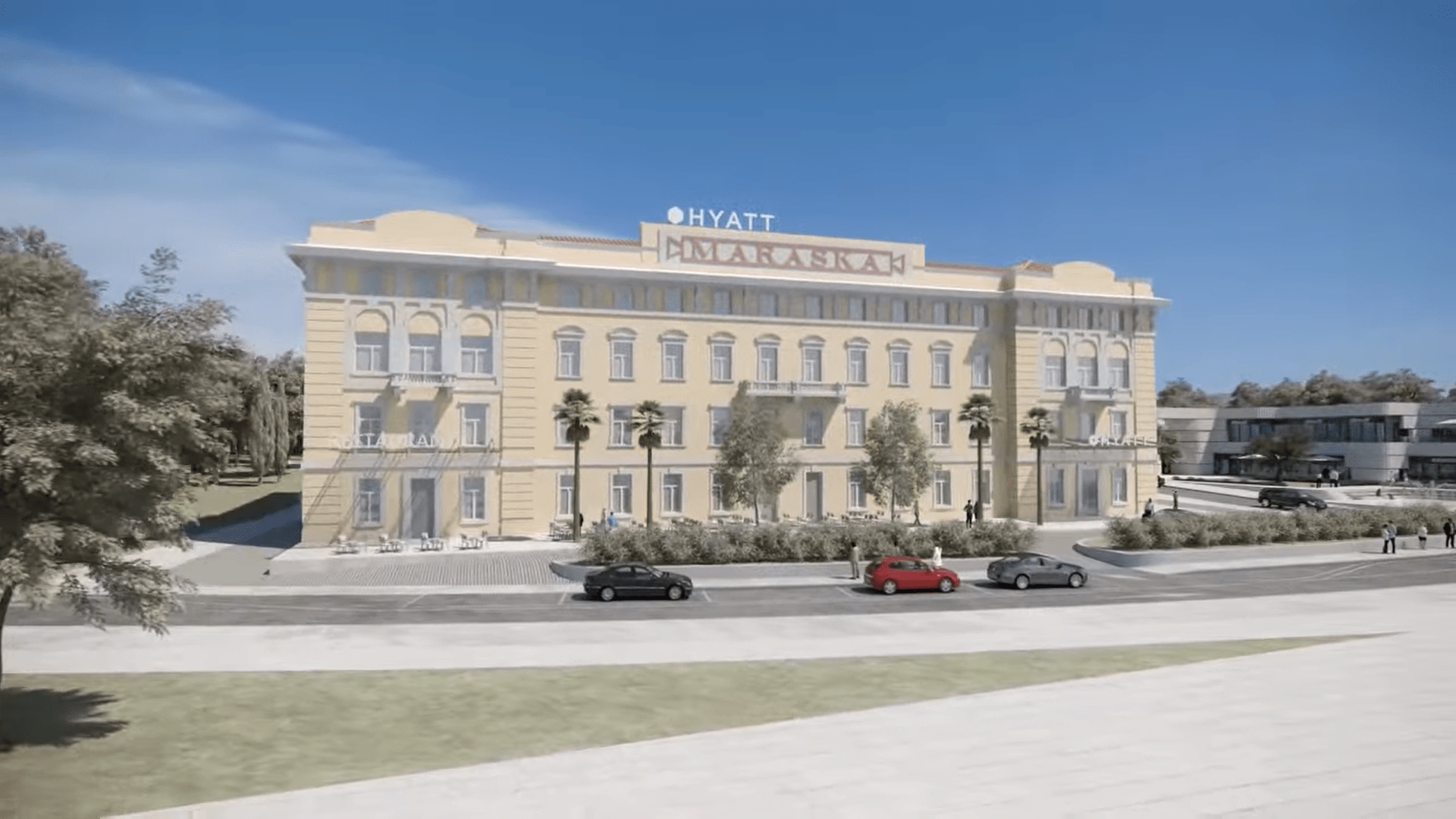 Hyatt Zadar - Dogus Group
Hyatt Zadar - Dogus Group
The Dogus Group is one of the bigger foreign investors in Croatia, namely in nautical facilities in Šibenik, Sukošan and Zadar. Representatives of the Croatian subsidiary of the Turkish group have stated once before that the company invested around 270 million euro in Croatian tourism in the ten years they’ve been doing business in Croatia.
In mid-2019, the company Crodux, formerly owned by Tankerkomerc, announced its intention to build a large development near the Maraska building, namely in the area from the Tankerkomerc administrative building to the marina of the same name. This Dogus group has confirmed this as one of the reasons for the delays in the Maraska project.
At one point, Dogus also planned to take partial ownership of Tankeromerc and merge the Maraska Hotel project with Marina Zadar, but the pre-bankruptcy settlement fell through once it turned out that Tankerkomerc wasn’t a confirmed future concessionaire of the marina and that the story was far from over.
The state will soon take possession of Marina Zadar, based on a final judgement in their dispute with Tankerkomerc that was launched about ten years ago.
Tankerkomerc believes that it should be the owner of the marina on the basis of many years of ownership, operation and investments in the facility, and the state disputes this because the marina is considered to be maritime property.
According to the latest verdict from January 2020, the marina should have been returned to the Ministry of Maritime Affairs, but Tankerkomerc, which was taken over by General Ivan Čermak in the meantime, filed an appeal that has since been resolved in favour of the Ministry.
Tankerkomerc also has a dispute with the state concerning the return on their investments in the marina in the amount of €40 million.
British Airways Zagreb Flights Return End of February, Flyr Bergen-Zadar Running from June
February 18, 2022 - The latest flight news to Croatia as British Airways Zagreb flights return at the end of the month, and new Norwegian low-cost passenger airline Flyr announced its second route to Zadar.
British national airline British Airways will resume regular flights between London (Heathrow Airport) and Zagreb from the last day of February, reports Croatian Aviation.
Namely, as of February 28, British Airways has announced it will resume traffic between Zagreb and London. Since the beginning of the pandemic, this airline has very often changed its schedule to Zagreb, continuously canceling a number of flights.
The last time this happened was at the very end of 2021, and now, after less than two months, the airline will resume traffic to the Croatian capital.
Croatia Airlines, which currently operates between the two cities four times a week, and Ryanair, which has reduced the number of flights from seven to five in the first two months of this year, have maintained regular operations on this line.
British Airways planned to return to Zagreb at the beginning of February, but not long after all flights were canceled until February 28. After that, five flights a week were announced for March, and then all flights were canceled on Fridays. Thus, there should be four flights a week in traffic next month, every Monday, Tuesday, Thursday and Sunday.
Unlike the line between London and Zagreb, where there were significant reductions in last year's summer flight schedule, British Airways did not have such problems with flights to the coast (Dubrovnik, Split, and Pula), so larger reductions of announced flights to the coast are not expected in the upcoming summer season.
Before the outbreak of the pandemic, in the summer of 2019, British Airways had a very high demand on the line between Zagreb and London, prices were often quite high and there were as many as 13 flights a week run by the British carrier.
Furthermore, Croatian Aviation reports that the new Norwegian airline Flyr will introduce another new route to Zadar Airport this summer.
After announcing a regular seasonal line between Zadar and Oslo, Flyr will operate between Zadar and Bergen once a week from June 11, every Saturday. The route has been announced until mid-August, i.e., August 13, and the flights are already on sale on the airline's official website.
This carrier has six B737-800 aircraft in the fleet with a capacity of up to 189 seats. Along with Zadar, Flyr will release tickets on another new line to Croatia on February 22 this year. Namely, Croatian Aviation reveals that in the upcoming summer flight schedule, Flyr will operate on a regular route between Oslo and Dubrovnik.
For more on flights to Croatia and other travel announcements, make sure to check out our dedicated travel section.
Ryanair Leeds-Zadar Flight Becomes 8th from UK Announced for 2022 Summer
February 17, 2022 - The new Ryanair Leeds-Zadar flight is the 8th route from the UK to this Croatian airport this summer!
Irish low-cost airline Ryanair released tickets on another new route from Zadar Airport on Wednesday, reports Croatian Aviation.
Namely, Ryanair announced tickets on its twelfth new route from Zadar airport for the upcoming summer flight schedule and the eighth Ryanair flight between Zadar and the UK!
This is a regular seasonal line between Zadar and Leeds (Bradford Airport), which will operate from May 3 this year. Two flights a week have been announced, every Tuesday and Saturday. On 52 return flights, Ryanair will offer a total of 19,136 seats, operating between the two cities on B737-800 aircraft with a capacity of 189 seats.
The line should operate until the very end of the summer flight schedule this year, i.e., until October 29, 2022. The plane will depart from Leeds in the early morning hours to Zadar, while the return from Zadar is planned before noon.
With this new announcement, Ryanair currently plans to offer a total of 45 scheduled, direct flights from Zadar Airport in the upcoming summer flight schedule. According to the announcements, it is expected that Zadar will achieve a large increase in terms of the number of passengers compared to last year, and potentially exceed the figures from the record, 2019.
“If the summer season begins without any major problems, this year we can expect more passengers and better financial results. Our estimate is that we will handle more travelers in 2022 than in 2019 when we had 801.347 passengers. We will see by how much," Zadar Airport's General Manager, Josip Klišmanić, said on Ex Yu Aviation. You can explore the entire Ryanair network on the airline's official website.
For more on flights to Croatia and other travel announcements, make sure to check out our dedicated travel section.
Zadar Digital Nomad Valley: You Should Go
February 14, 2022 - TCN is delighted to welcome one of the rising stars of the digital nomad scene. Community builder extraordinaire Dean Kuchel on his impressions of two weeks at Zadar Digital Nomad Valley.
Not enough. That’s how I sum up my visit to the recently opened - Digital Nomads Valley in Zadar, a hotel & campsite turned into a small village for remote professionals and digital nomads.
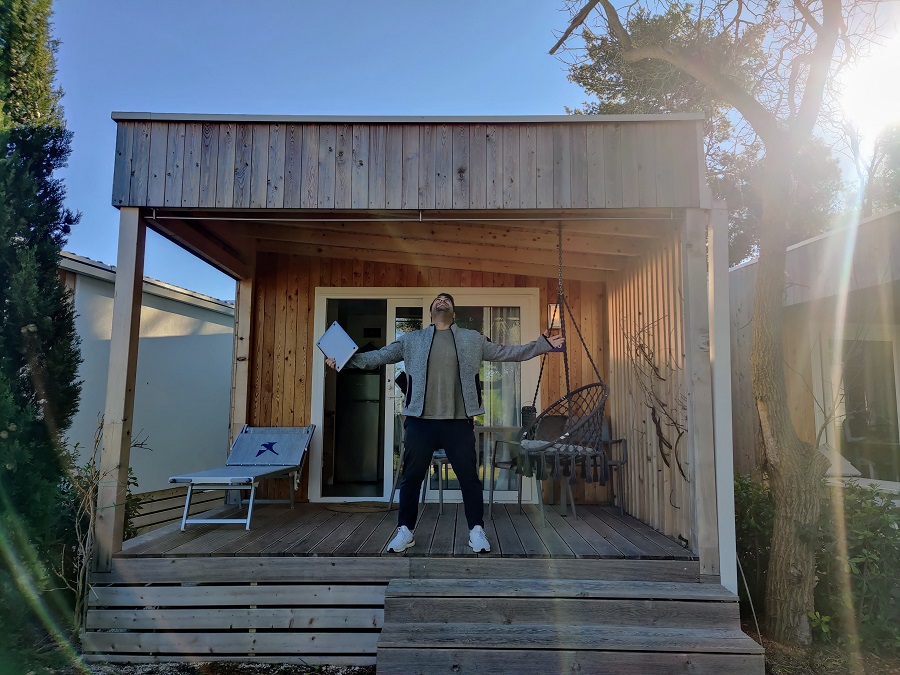
During my two weeks stay in January 2022, I was one among 15 nomads. Group of young guys & girls, some single, some with a partner, from places like Israel, Poland, United Kingdom, Germany, Czechia, and Syria.
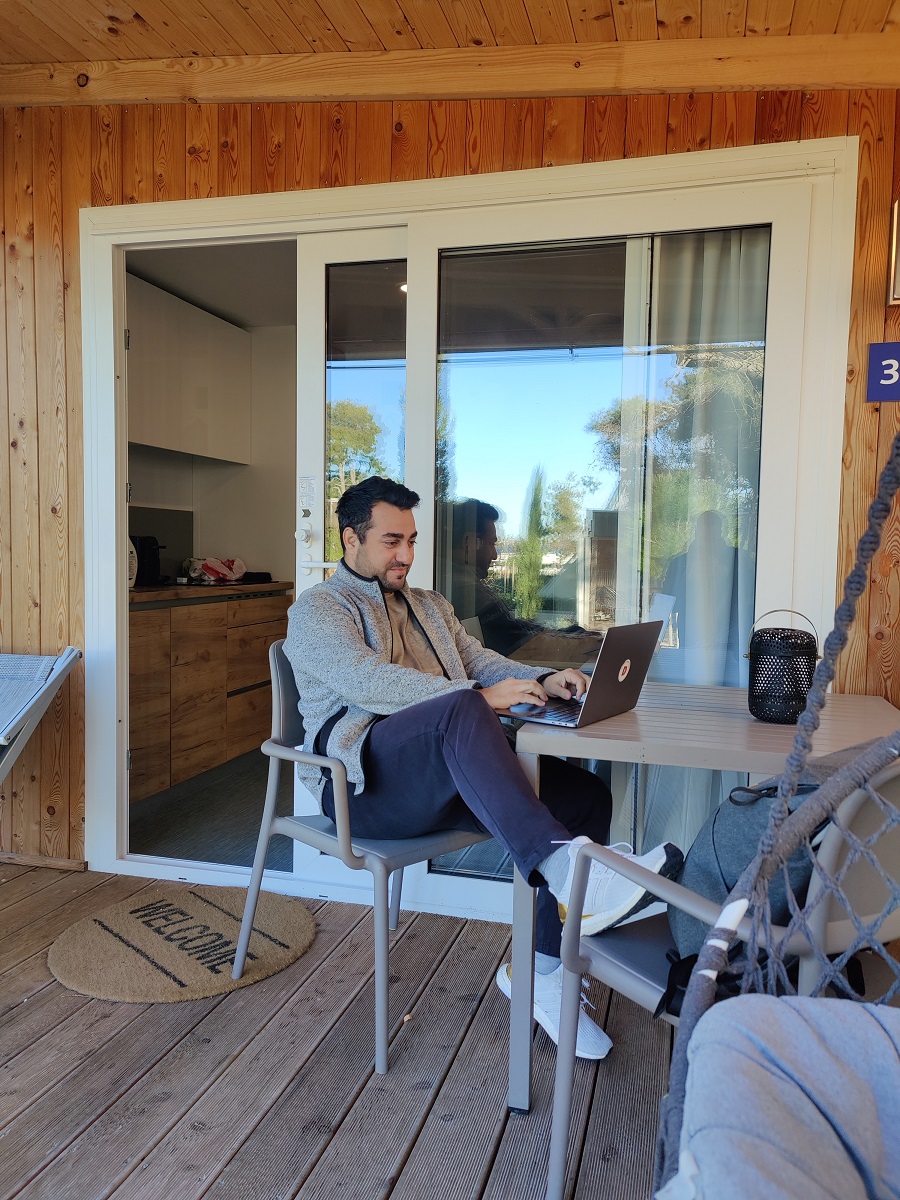
On the day of arrival, I was greeted by the community manager, who handed me the key to my studio unit and gave me a tour of the valley - the cowork, restaurant, bar, gym, pool, spa, beach, laundry, and parking - all within the perimeter of the valley, or 1 to 5 minutes walk.
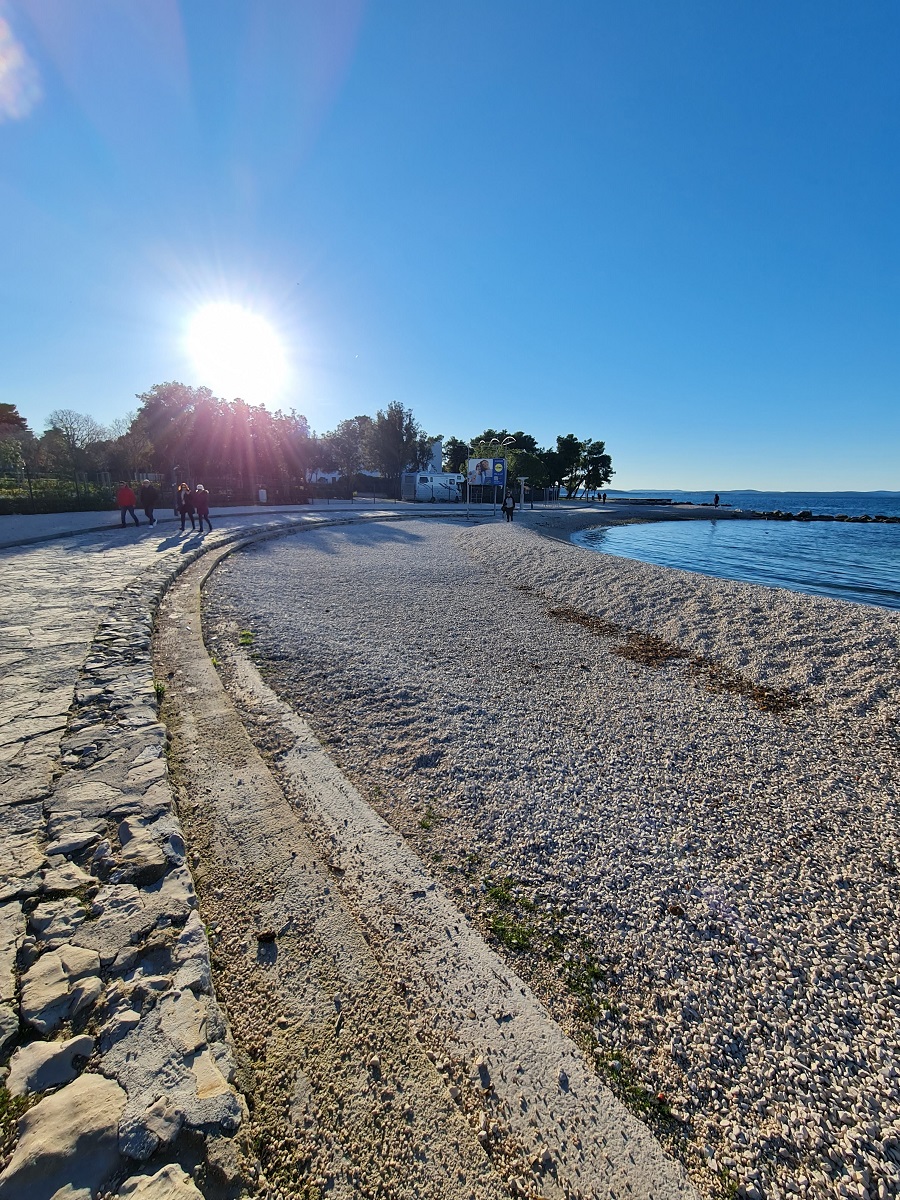
My room was a 20 square meter apartment, with a balcony, kitchenette, and dining-work area. There is also a large TV for those who watch, and a bonus Bluetooth speaker embedded in the ceiling, great for those “dance like nobody's watching” moments.

It is more than enough space for a single person. For couples or friends, the Valley offers a 2 or 3 bedroom unit.
The amenities are excellent, it’s really everything one needs, and all one wants. It is so convenient to jump between the gym, spa and the cowork, I made it my routine right after I unpacked my suitcase for the duration of my stay.
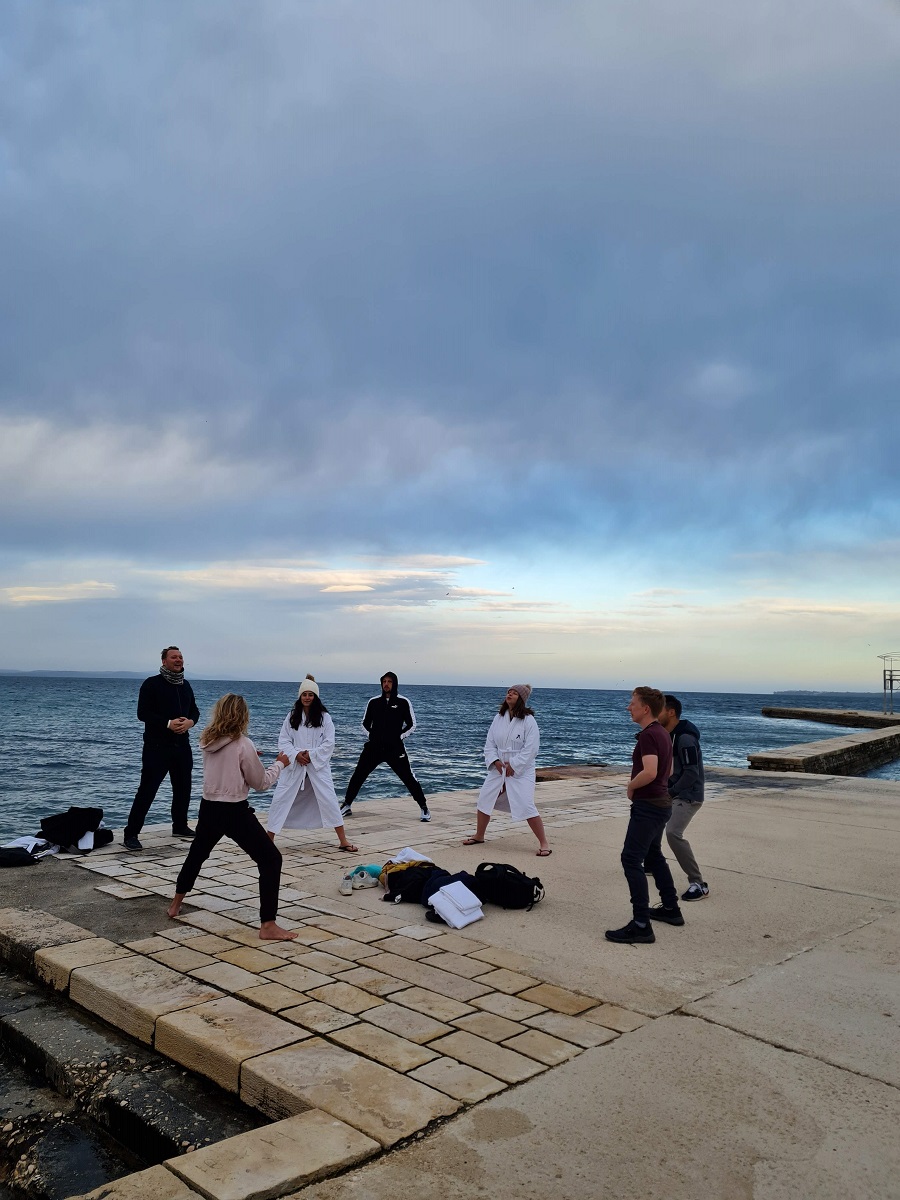
It is probably the best-equipped co-live I stayed in, but it would be unfair to call it a co-live, since the valley is first and foremost a community. The people I met were the highlight of my stay, and the reason I was sad to leave, - we, humans, we get attached to people, not places.
The valley attracts like-minded people who understand what the digital nomad lifestyle is about, celebrate it, and openly discuss the challenges.
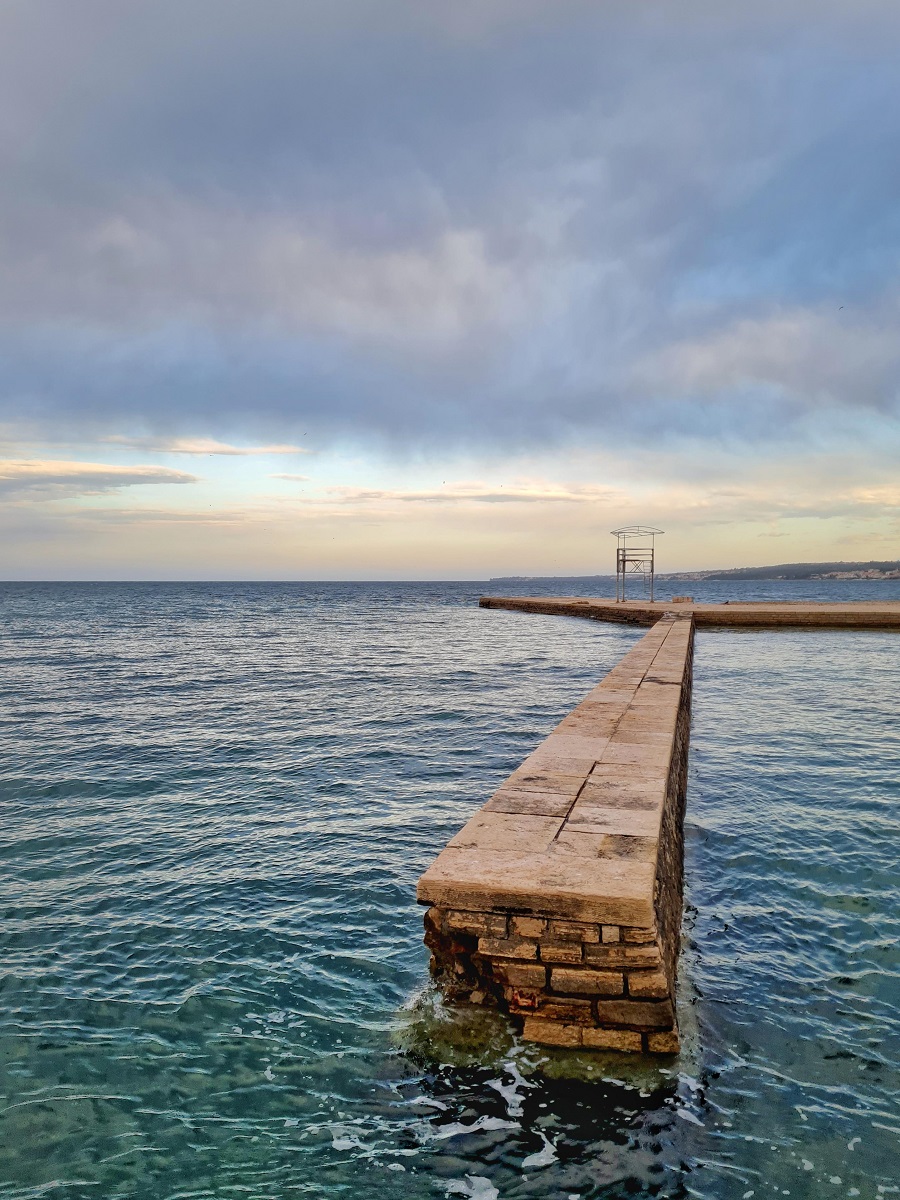
A group of strangers turned into close friends, travel buddies and business consultants within a few days.
We jumped together to the cold water of the sea, we dined together, and had long co-working sessions followed by happy hour, workouts, movie nights, and day trips to nearby islands - Croatia is rich in nature, and we made sure to take advantage of it.
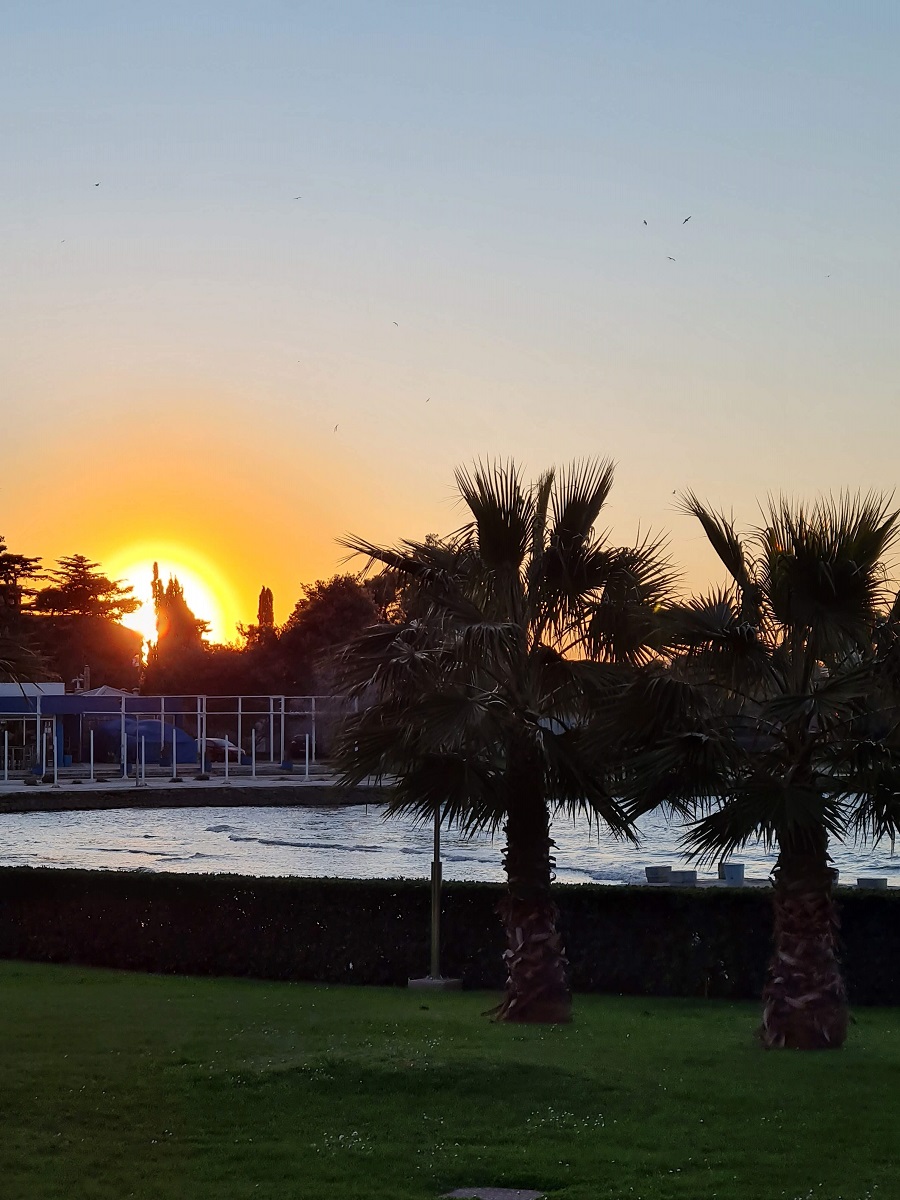
I am not new to the digital nomad lifestyle, I’ve been living of a single carry on for over 8 years now, traveled to 100+ countries in the process, and created a vast network of connections and friends, yet, the sensation of staying at the valley was different, it felt familiar, it felt like I belong there, or had been there before - it felt like a good old routine.
A word about Zadar, the city hosting the valley.
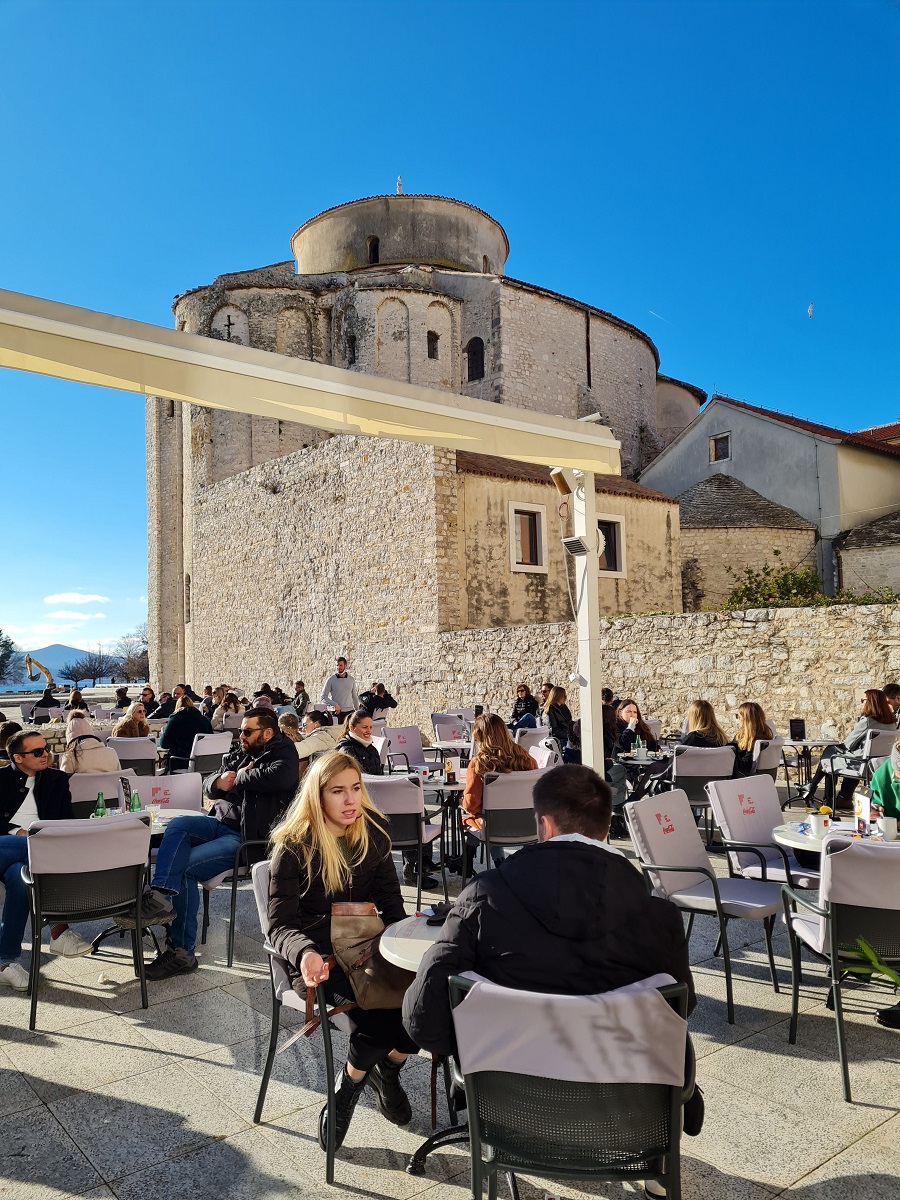
Zadar is the 5th largest city in Croatia, home to around 70,000 people. The land is kissing the sea on one side, and looking over a chain of mountains to the other side, the views are beautiful anywhere you look.
Old town Zadar is five minutes taxi ride away, that’s where many cafes, bars and restaurants are tucked between the old city walls. The city has its own magic, it can be romantic, and it can be wild. The options are all there

The 2nd largest city in Croatia, Split, is an 1.5 hour drive away, and Zagreb, Croatia’s capital is a short 3 hours bus ride, if you choose to hit the road - you will be rewarded with beautiful landscape throughout the drive.
So why do I summarize my experience with ‘not enough’?
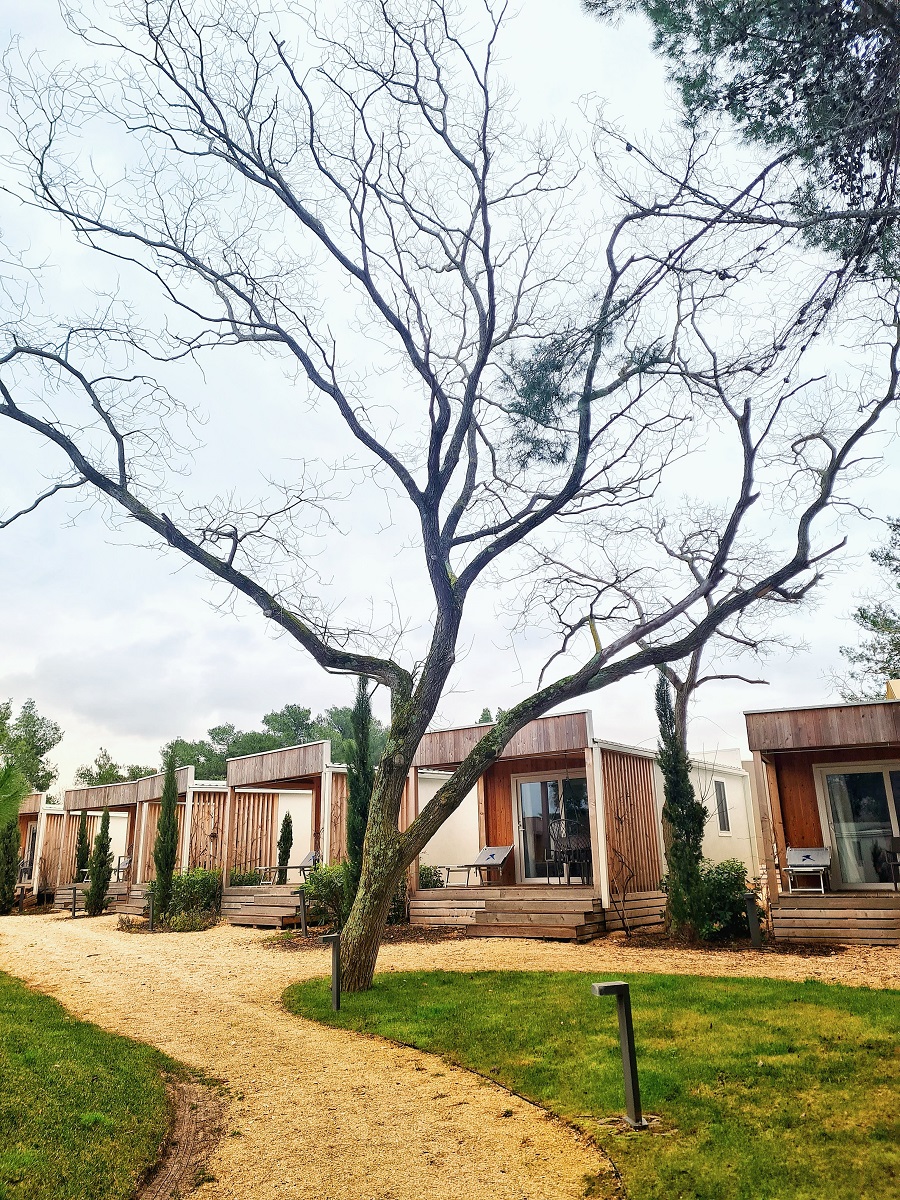
Simply because my two weeks were not enough time to enjoy it all, live it to the fullest, make the best of it, and too early to say goodbye to my new friends.
If you go, and I encourage you to do so, consider staying a solid month, if not longer.
You will fall in love, I promise you.
Digital Nomad Valley in Zadar is what a co-live should be like, and what a community should feel like, I will be back and will be staying way longer this time.
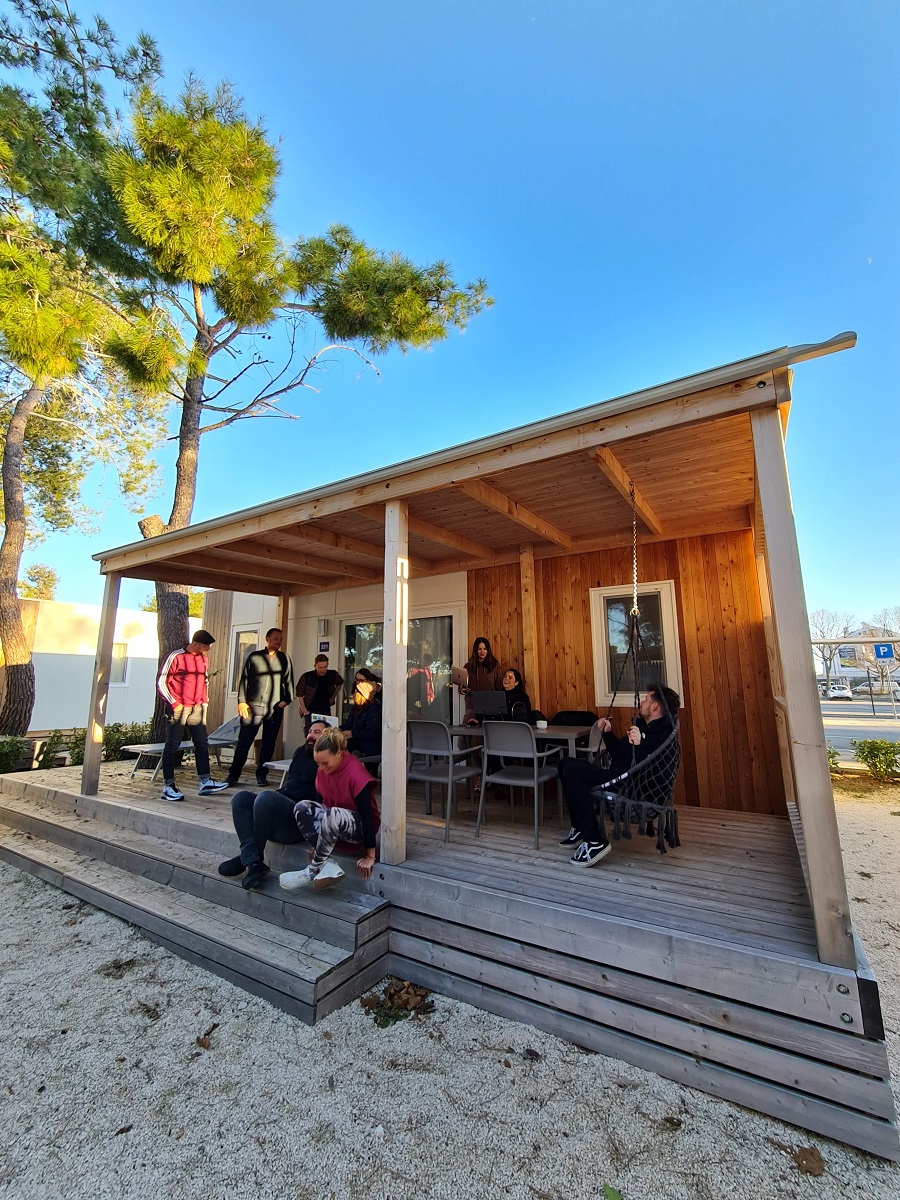
Say YES! Go Explore,
Dean Kuchel
King of Digital Nomads
Instagram: https://instagram.com/where_is_dean/
LinkedIn: https://www.linkedin.com/in/nimroddeank
For more news and features on digital nomads in Croatia, check out the dedicated TCN section.


